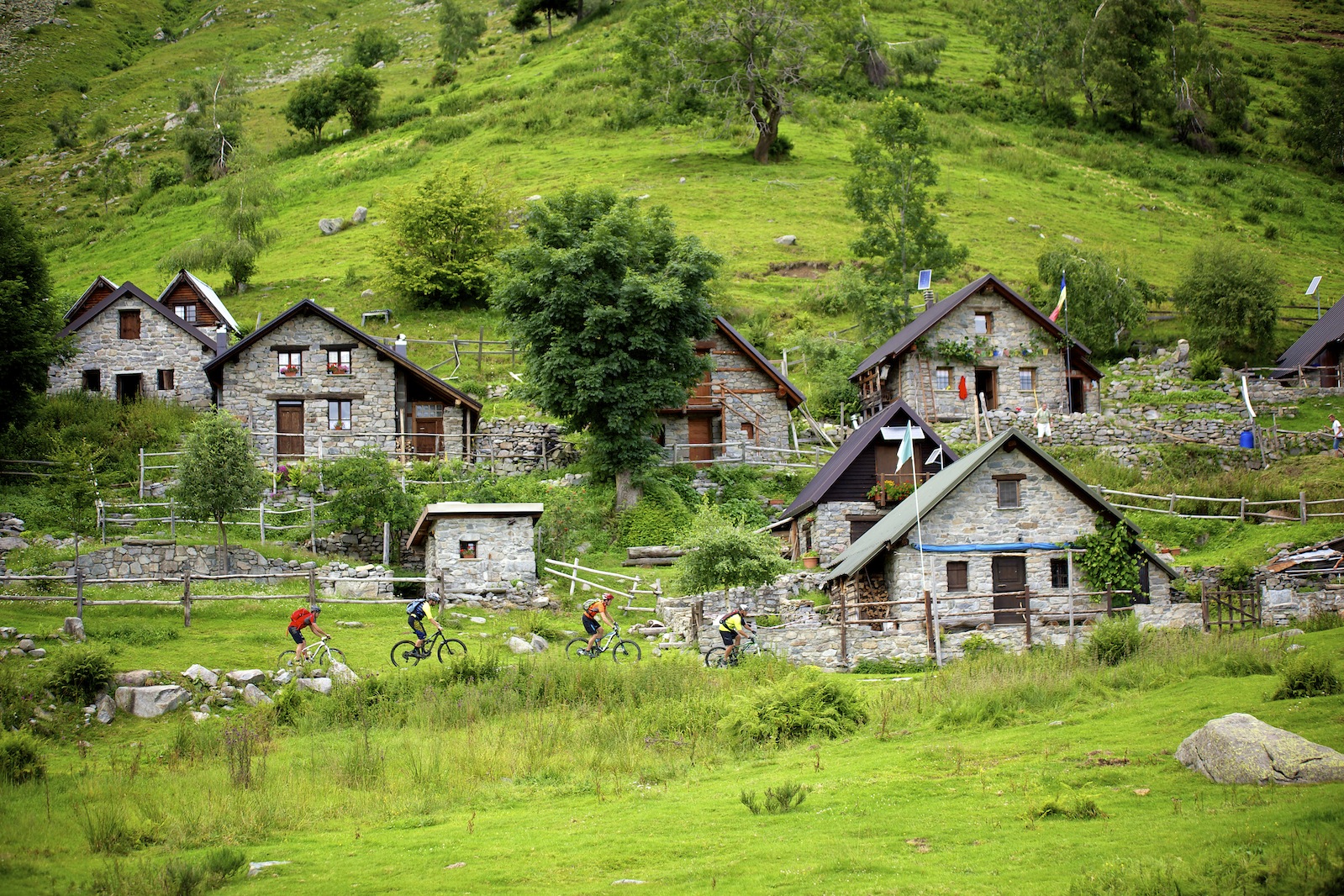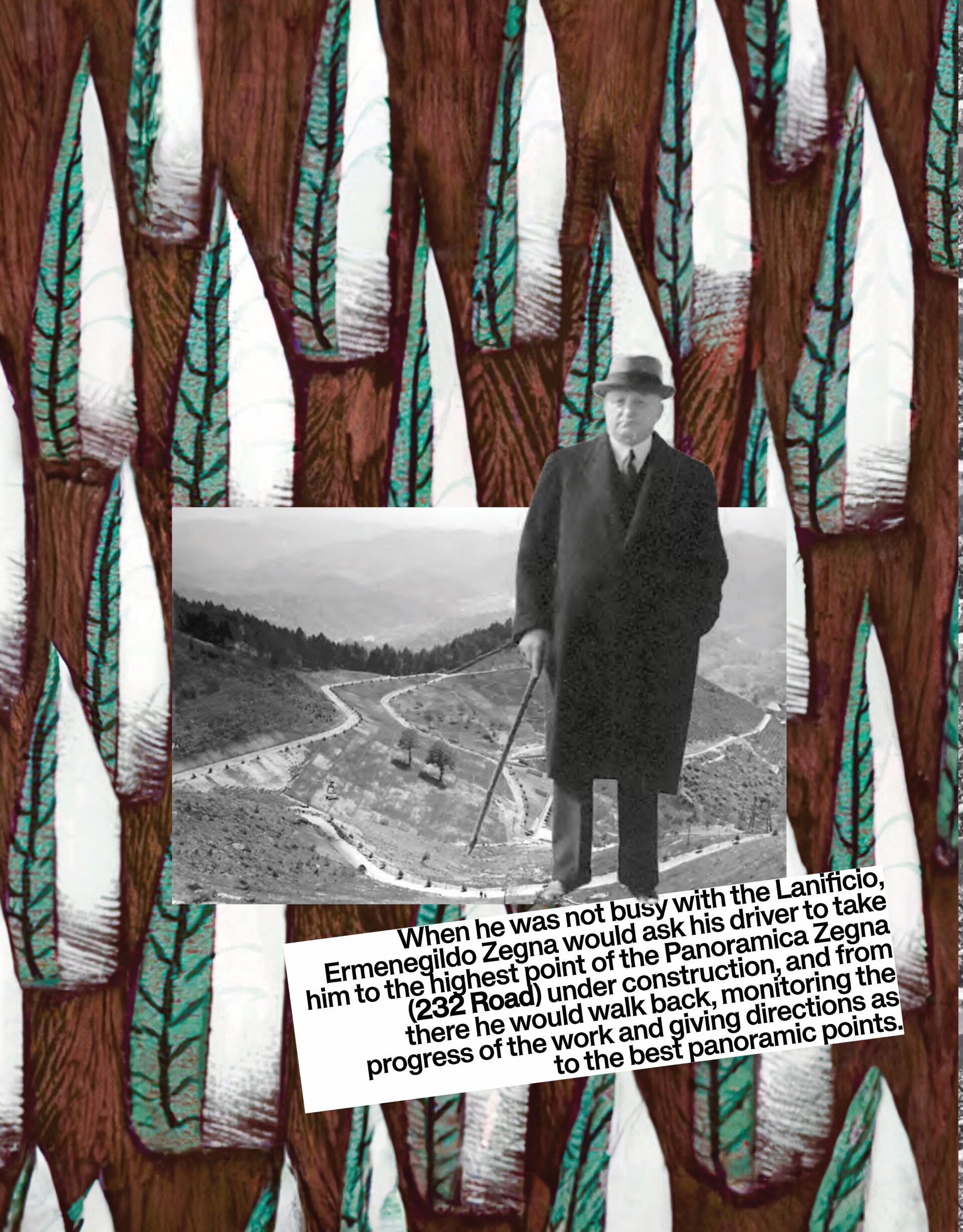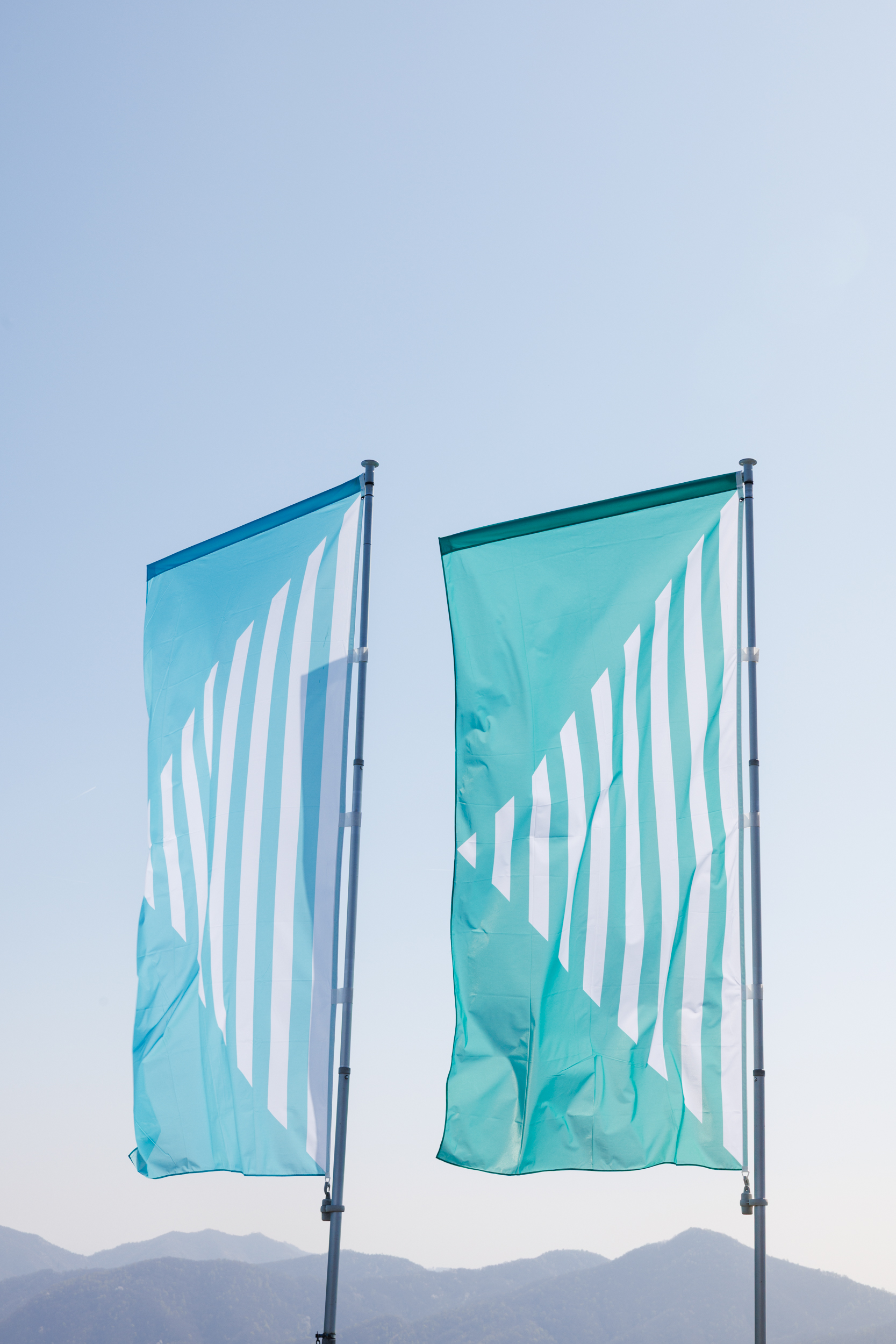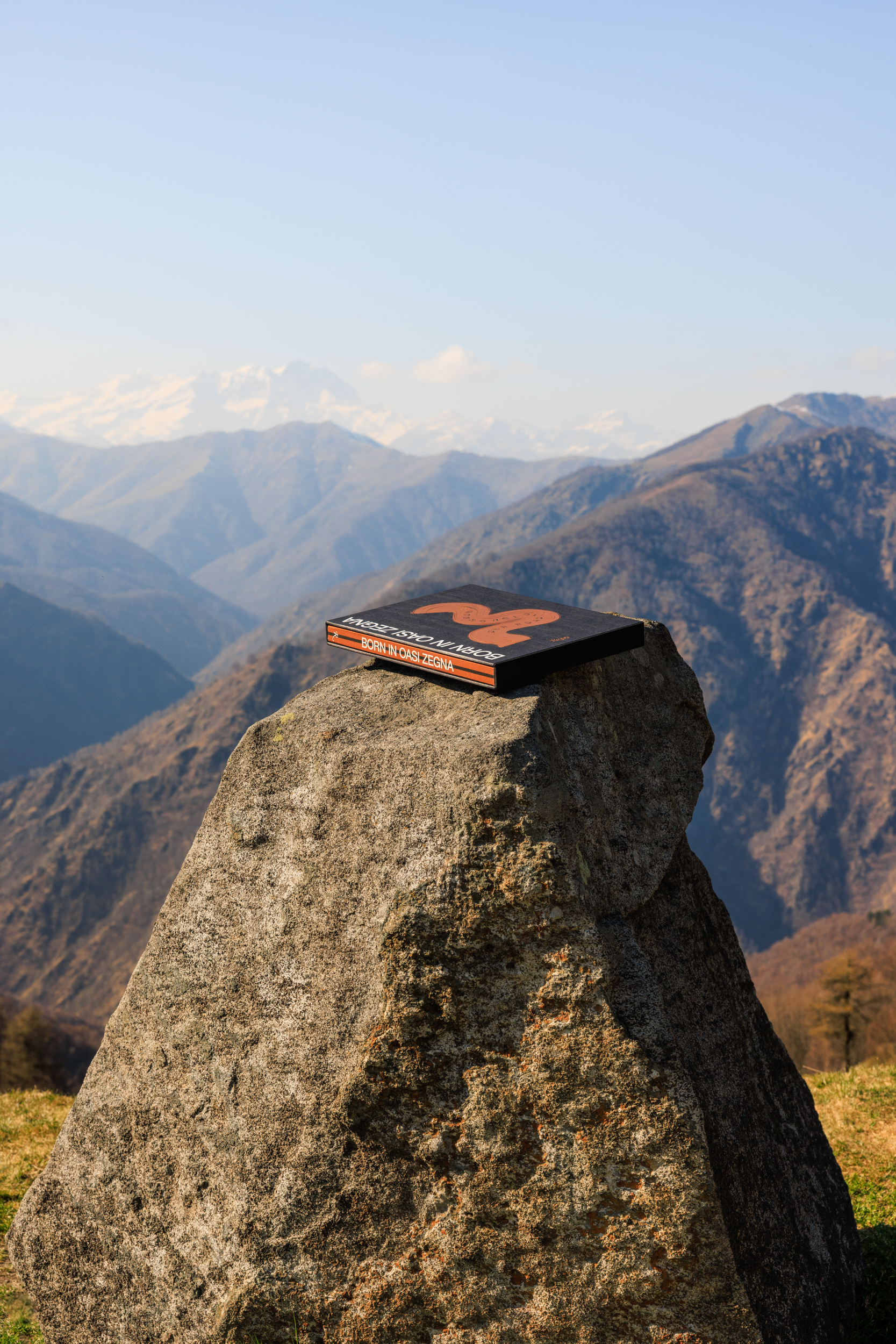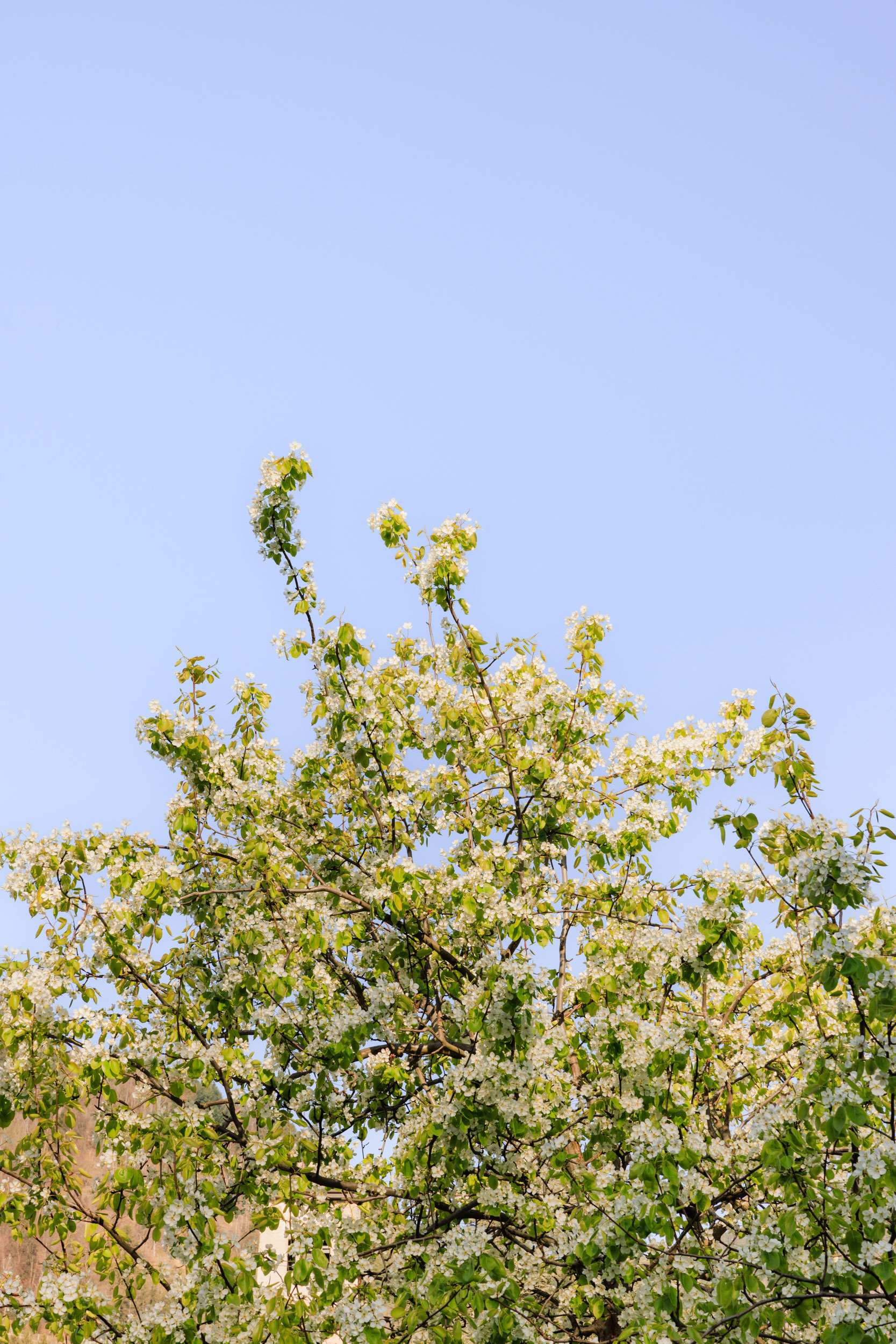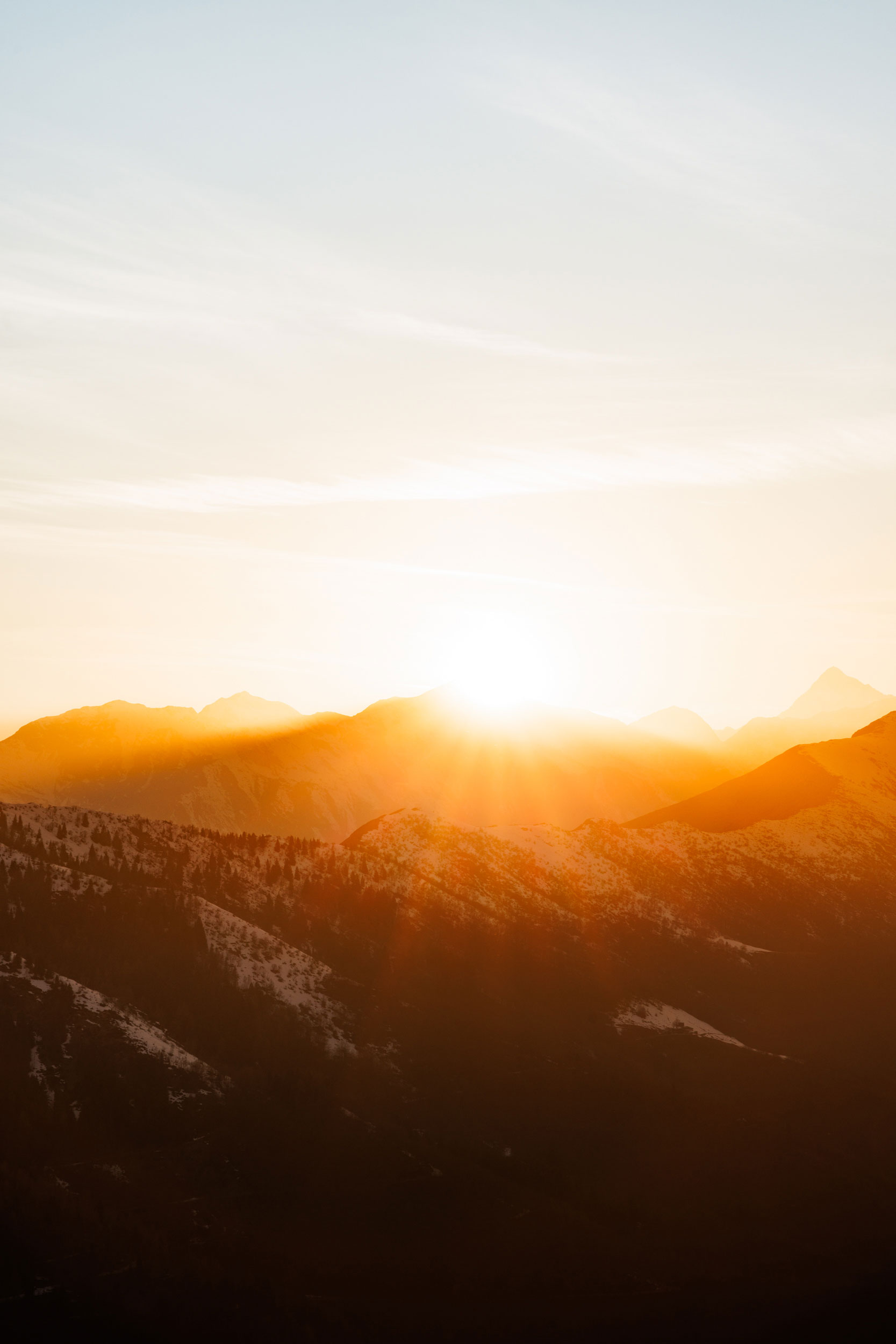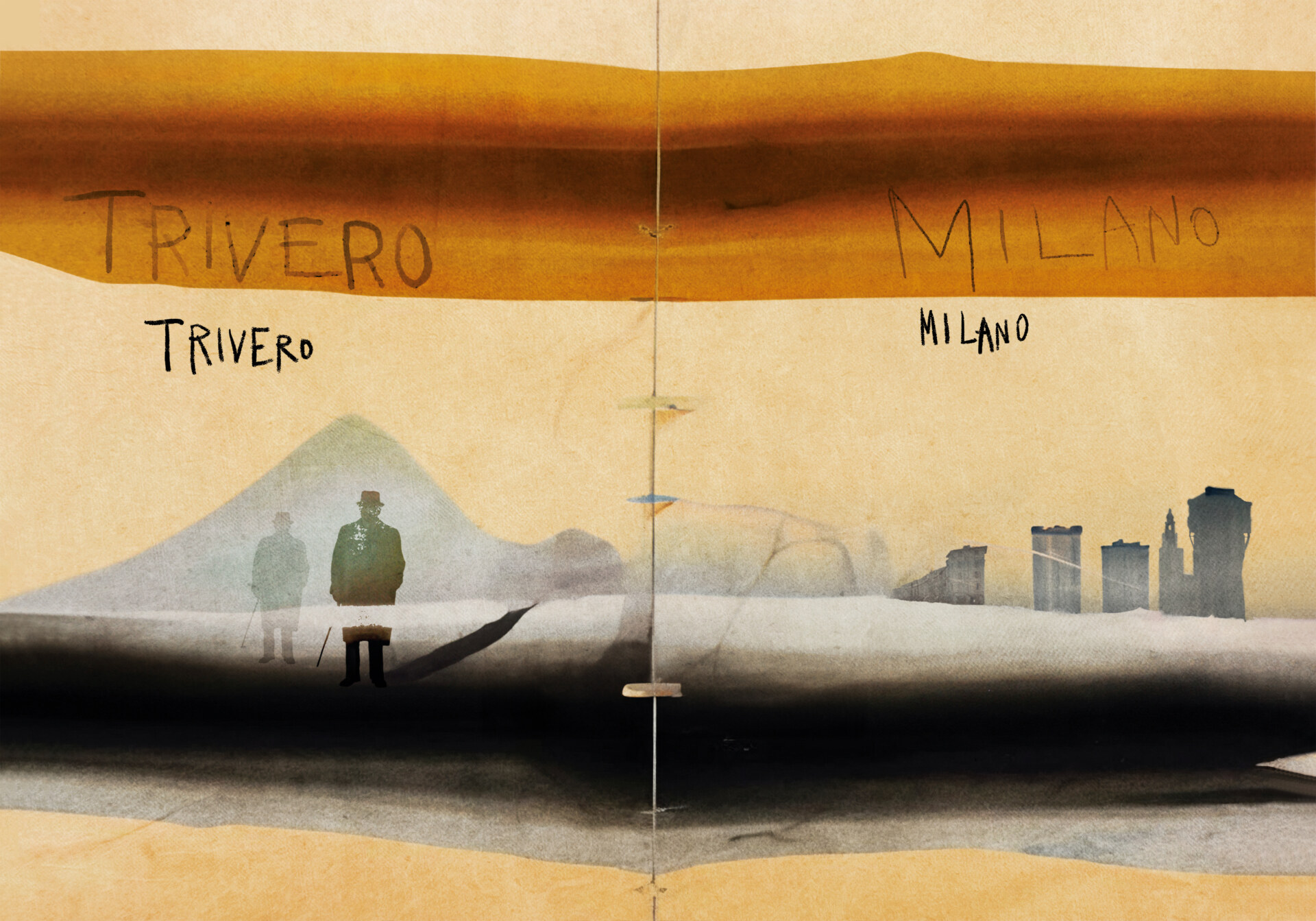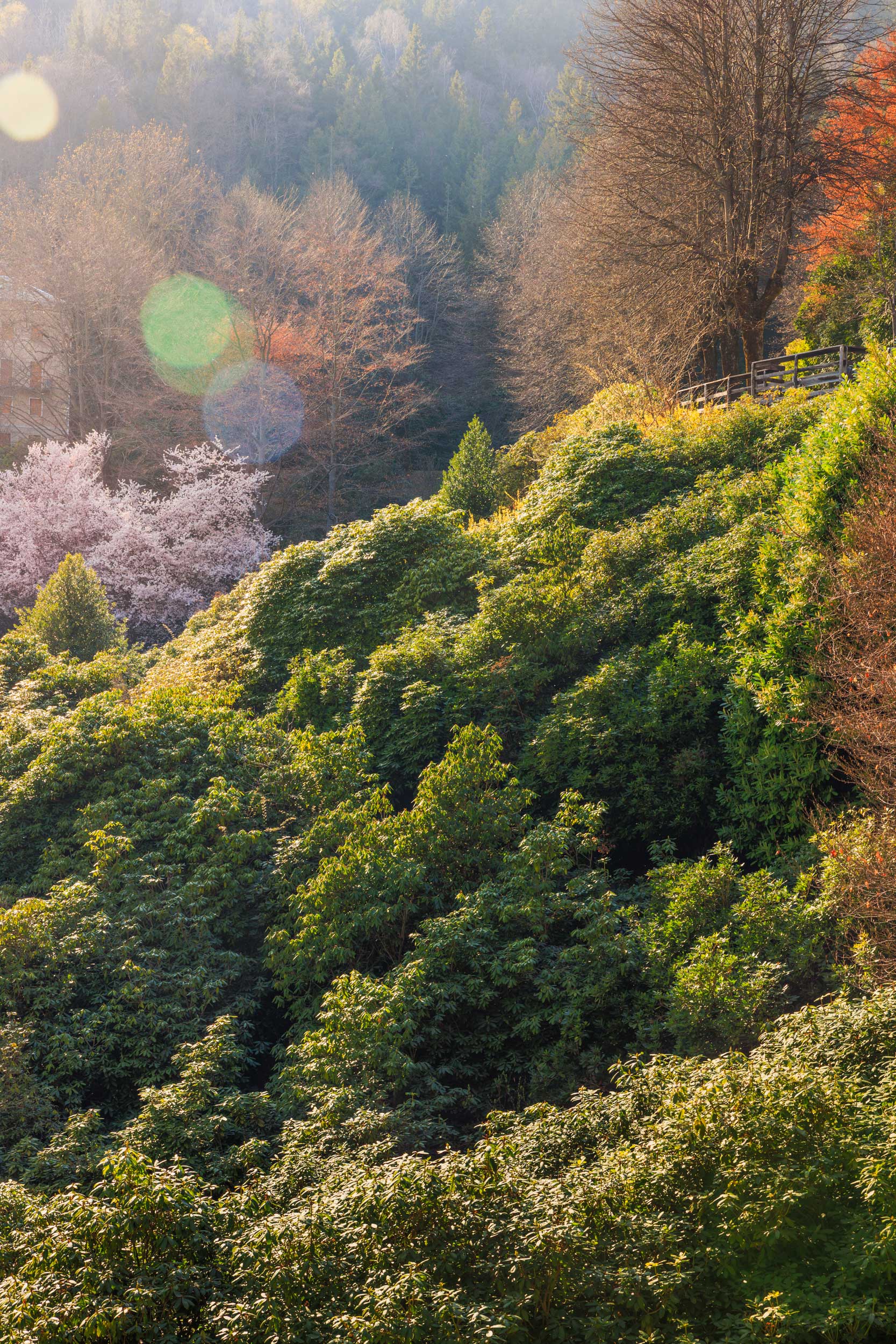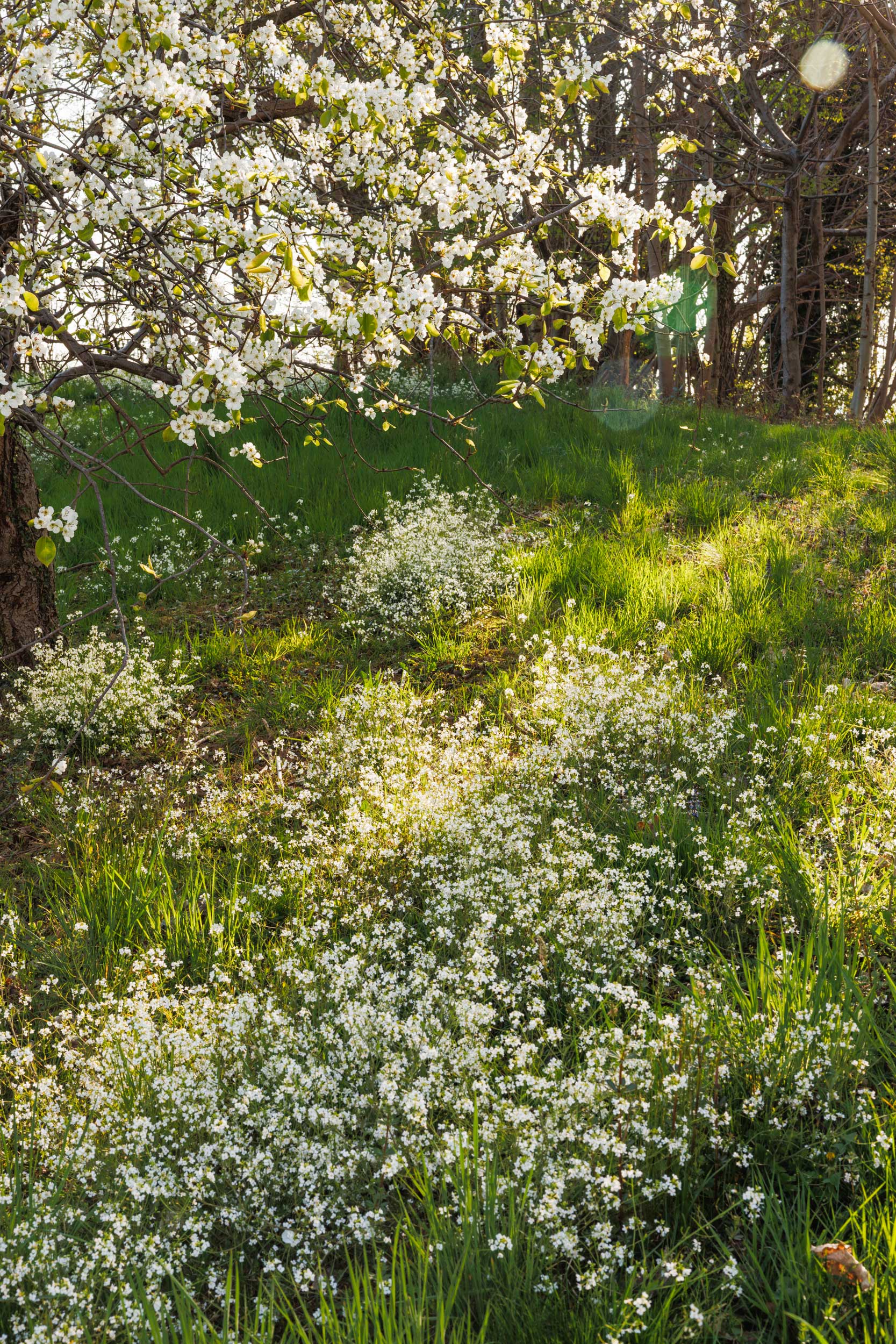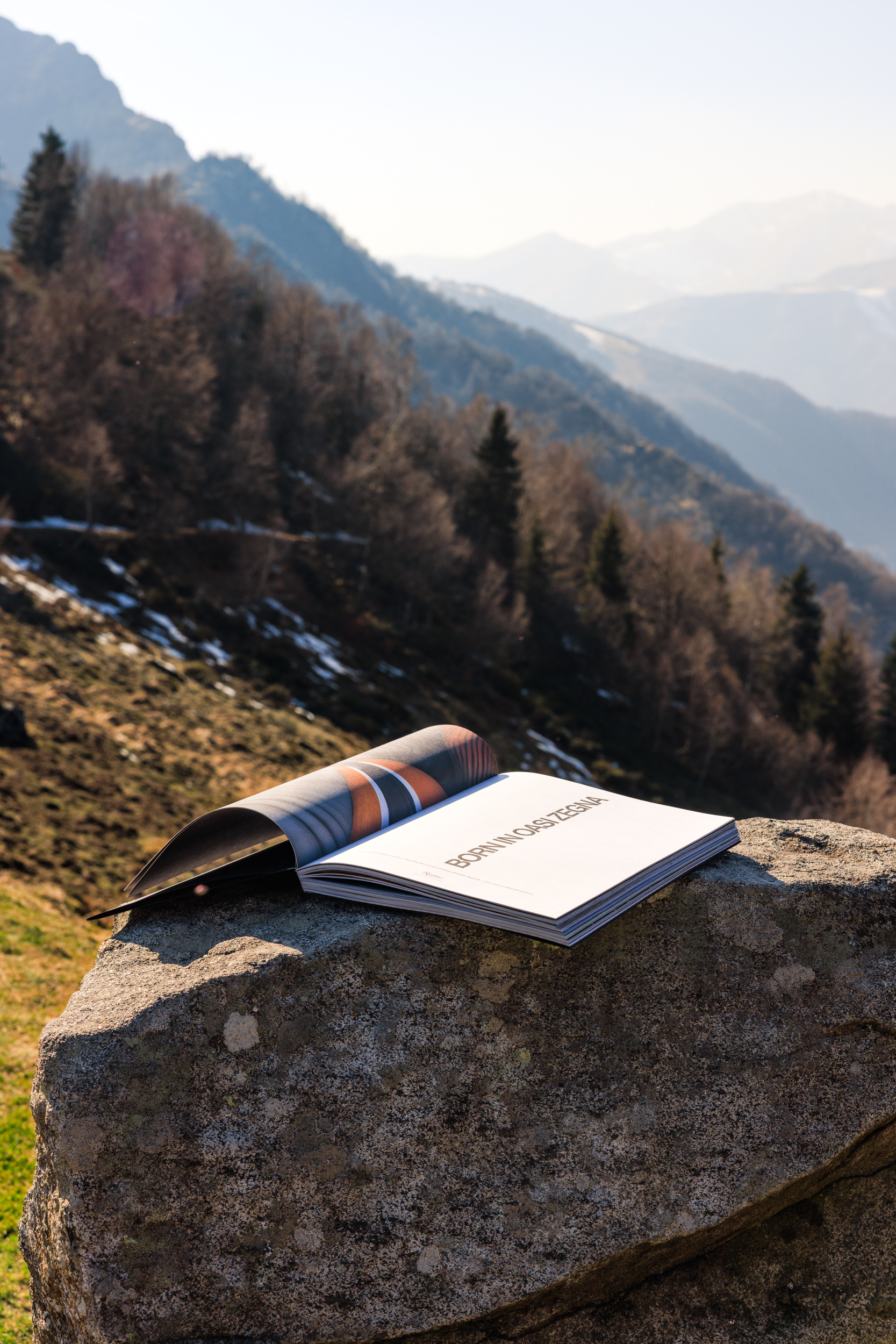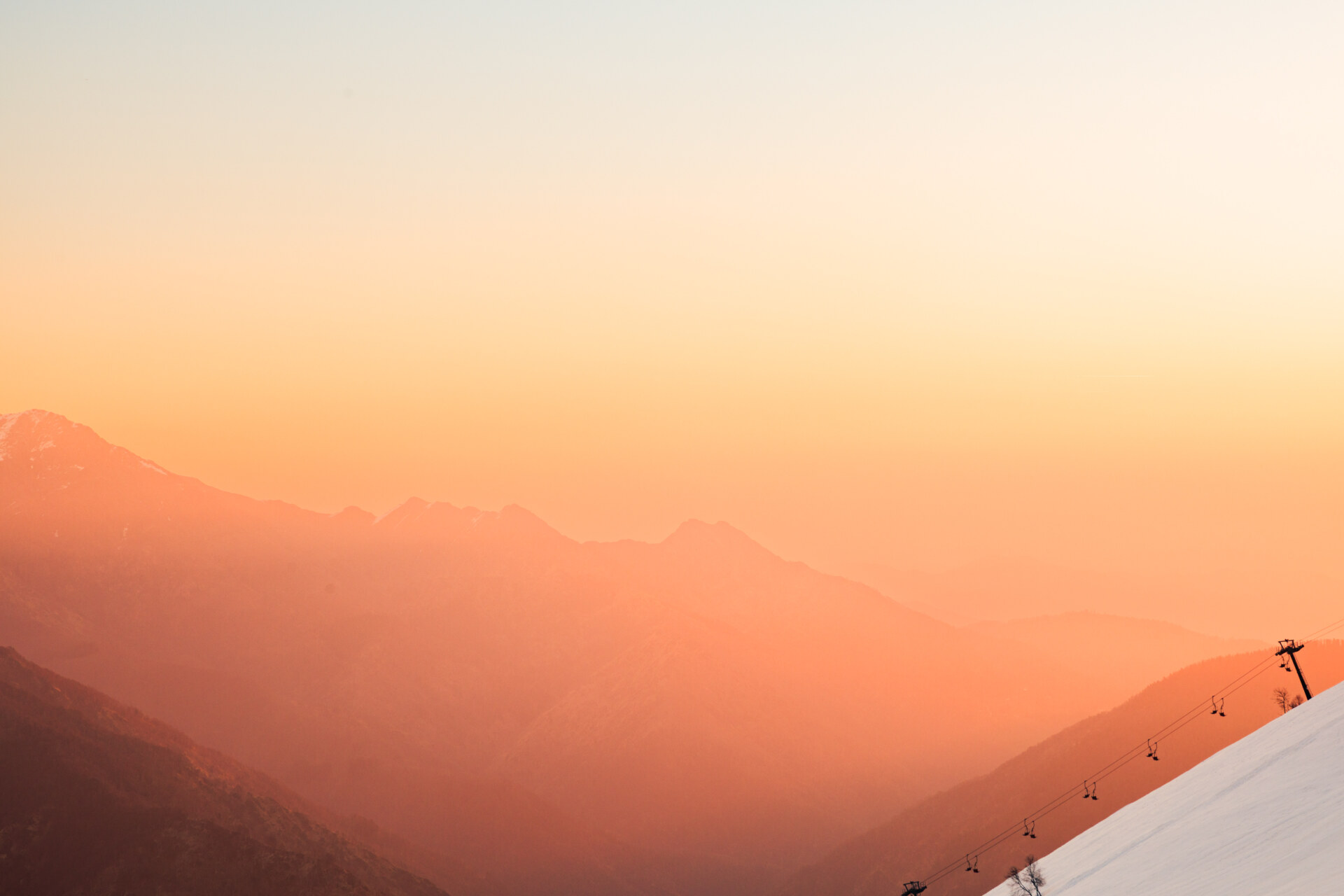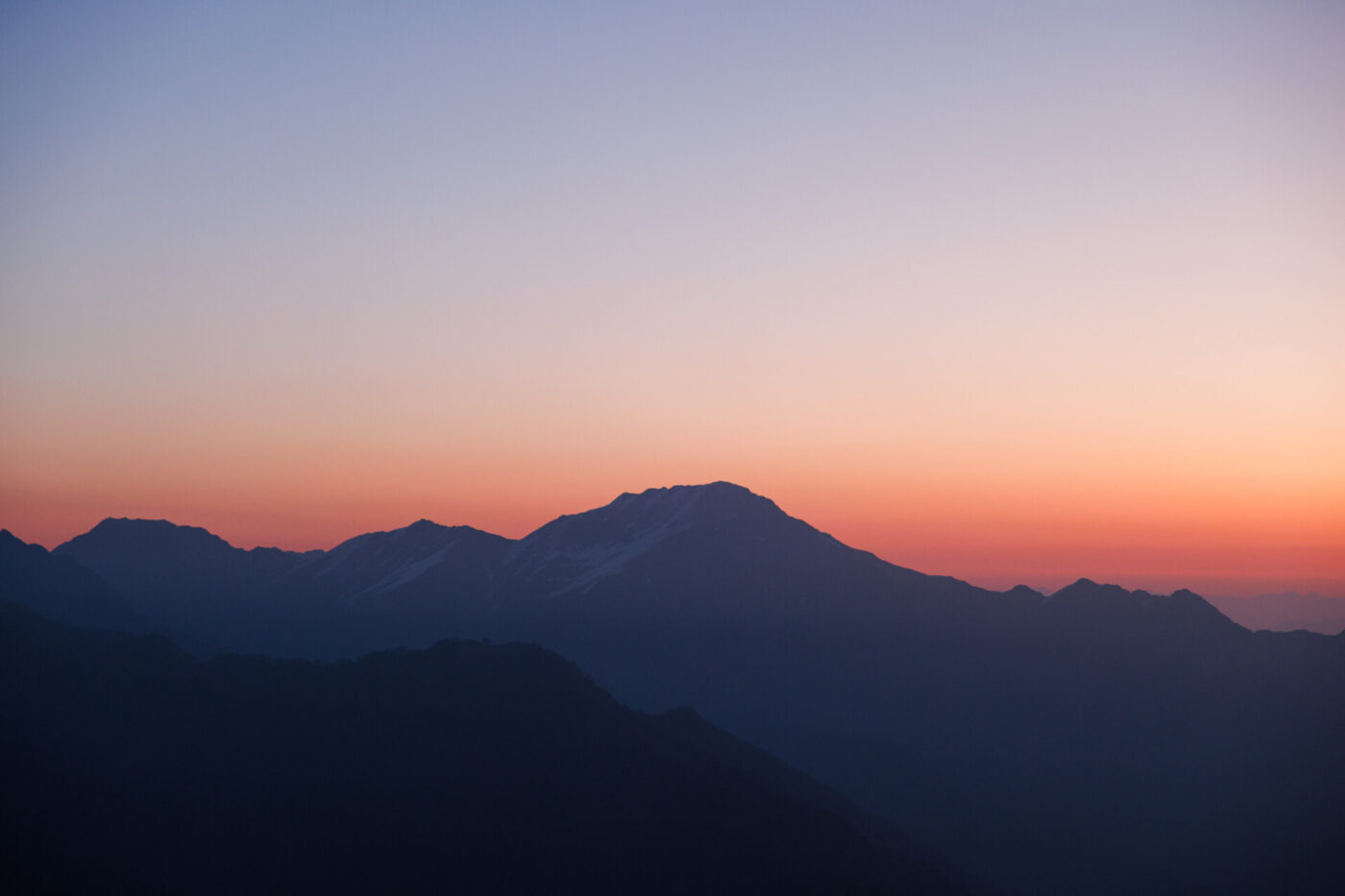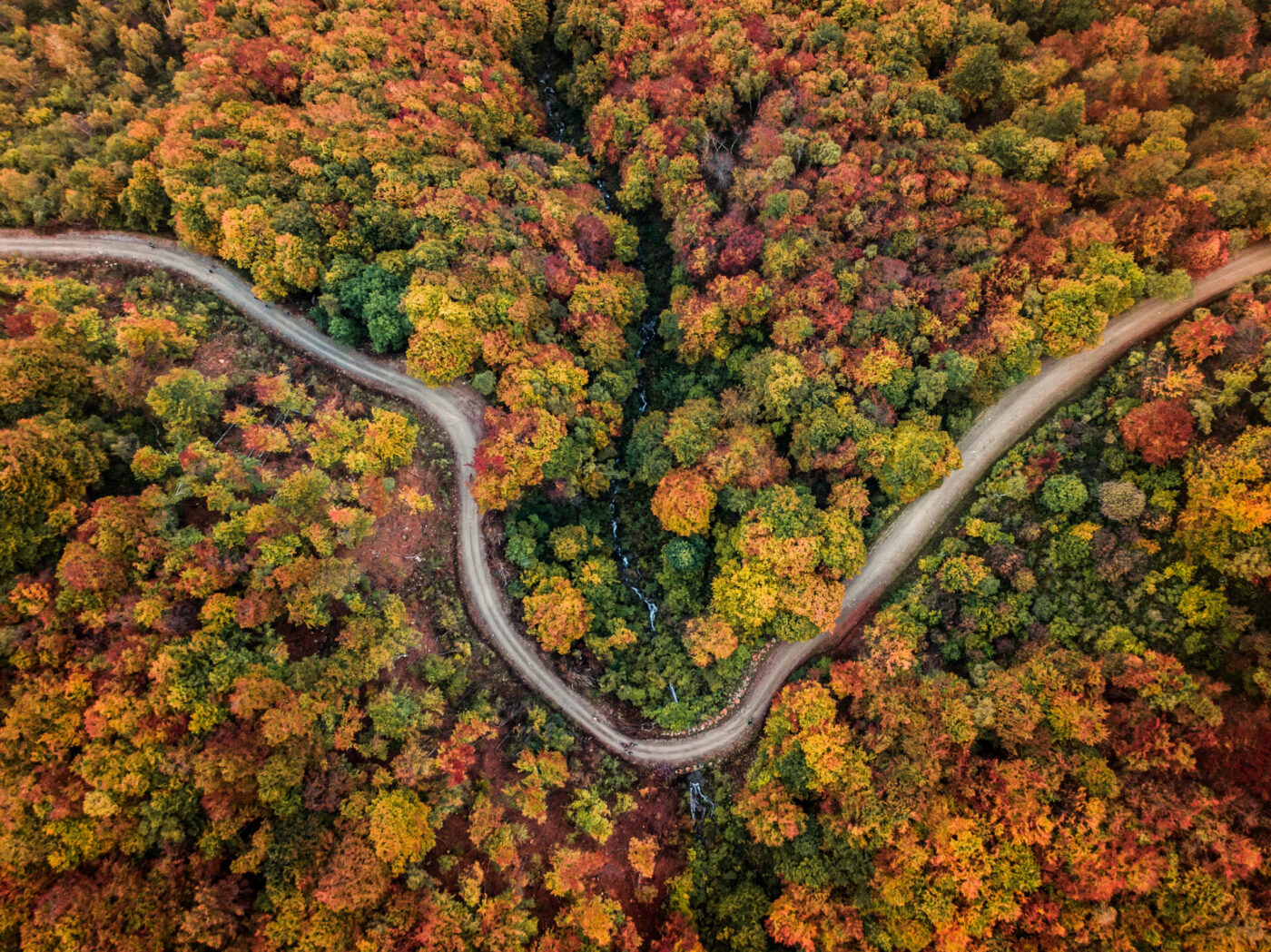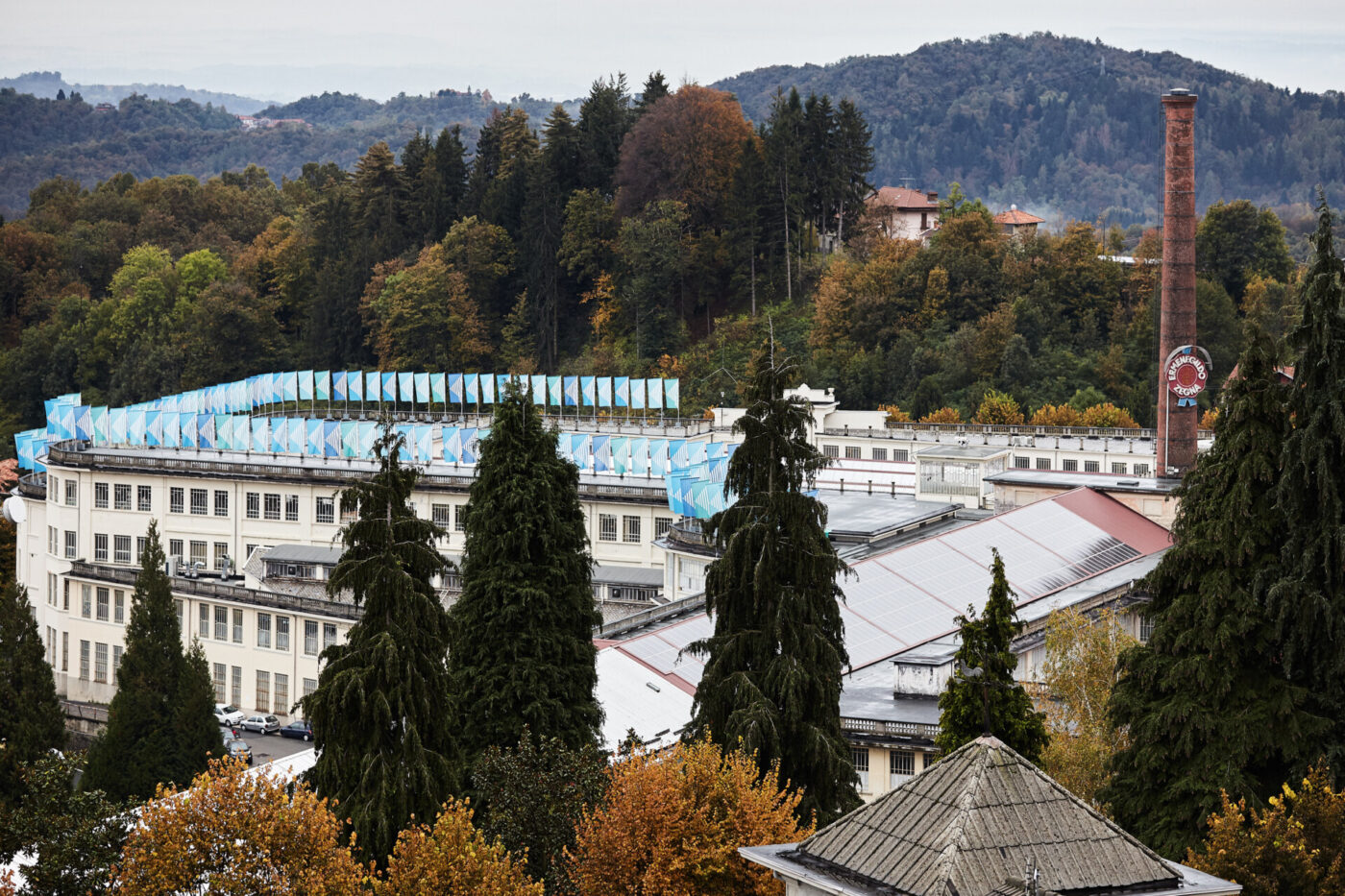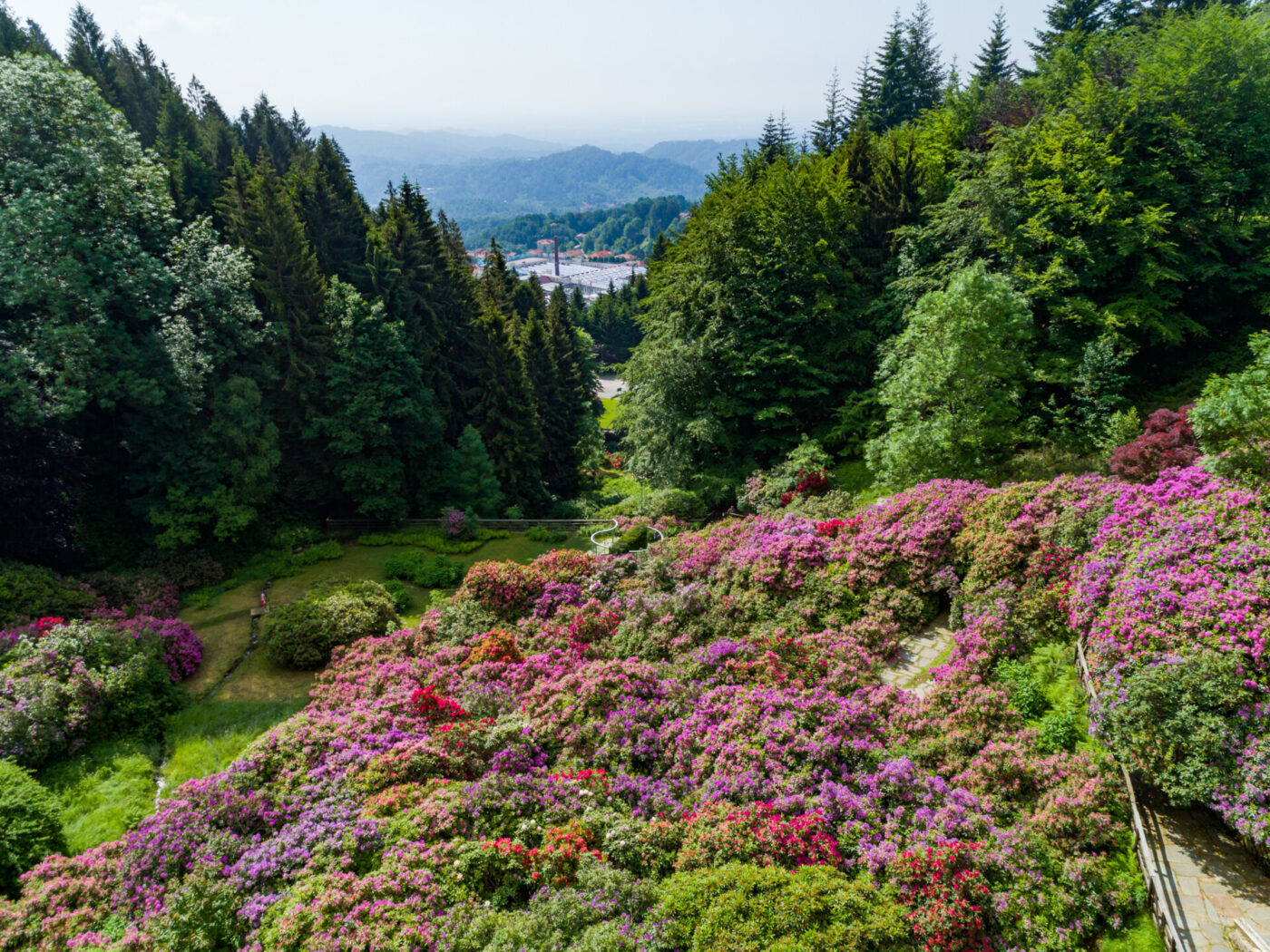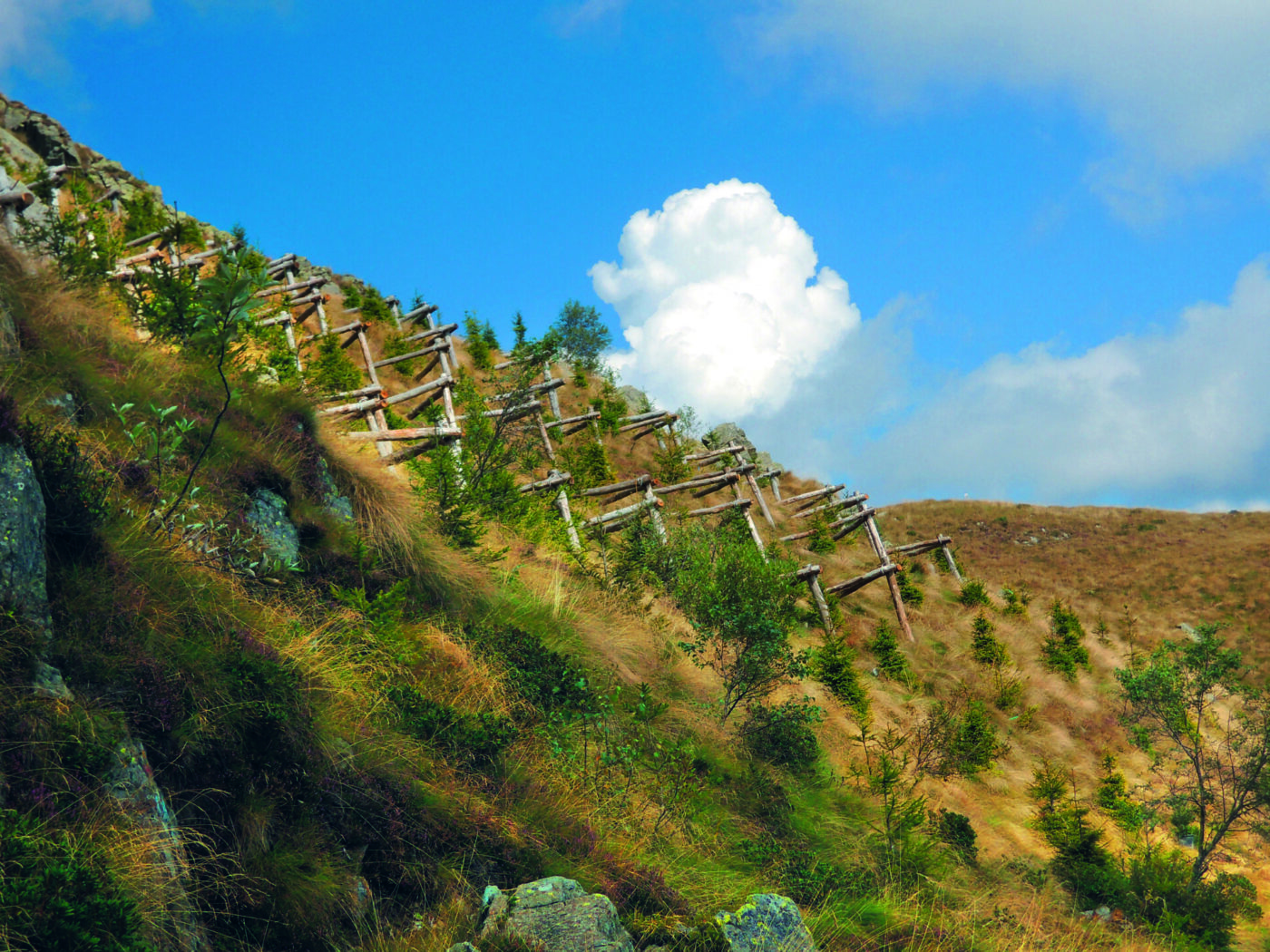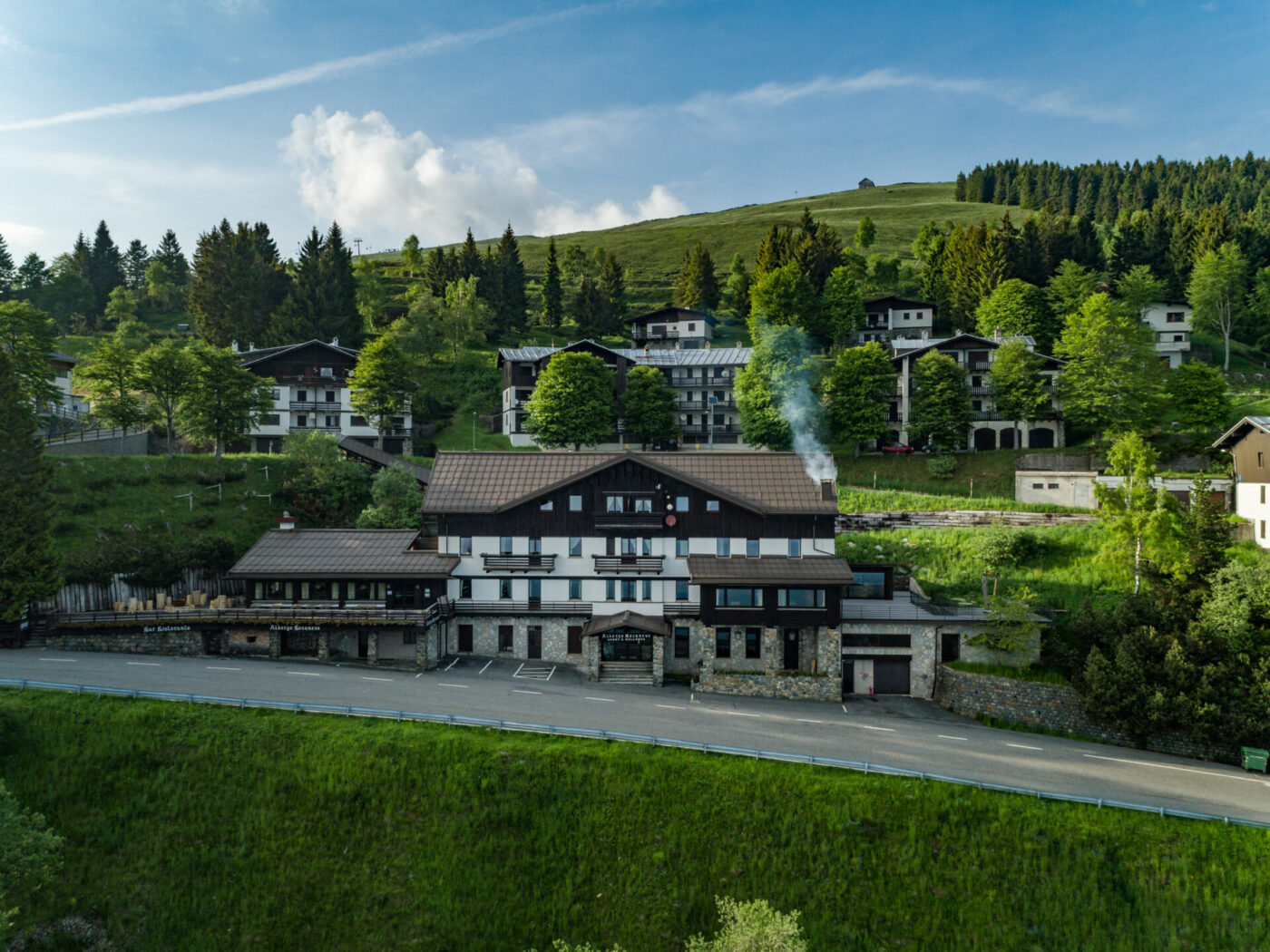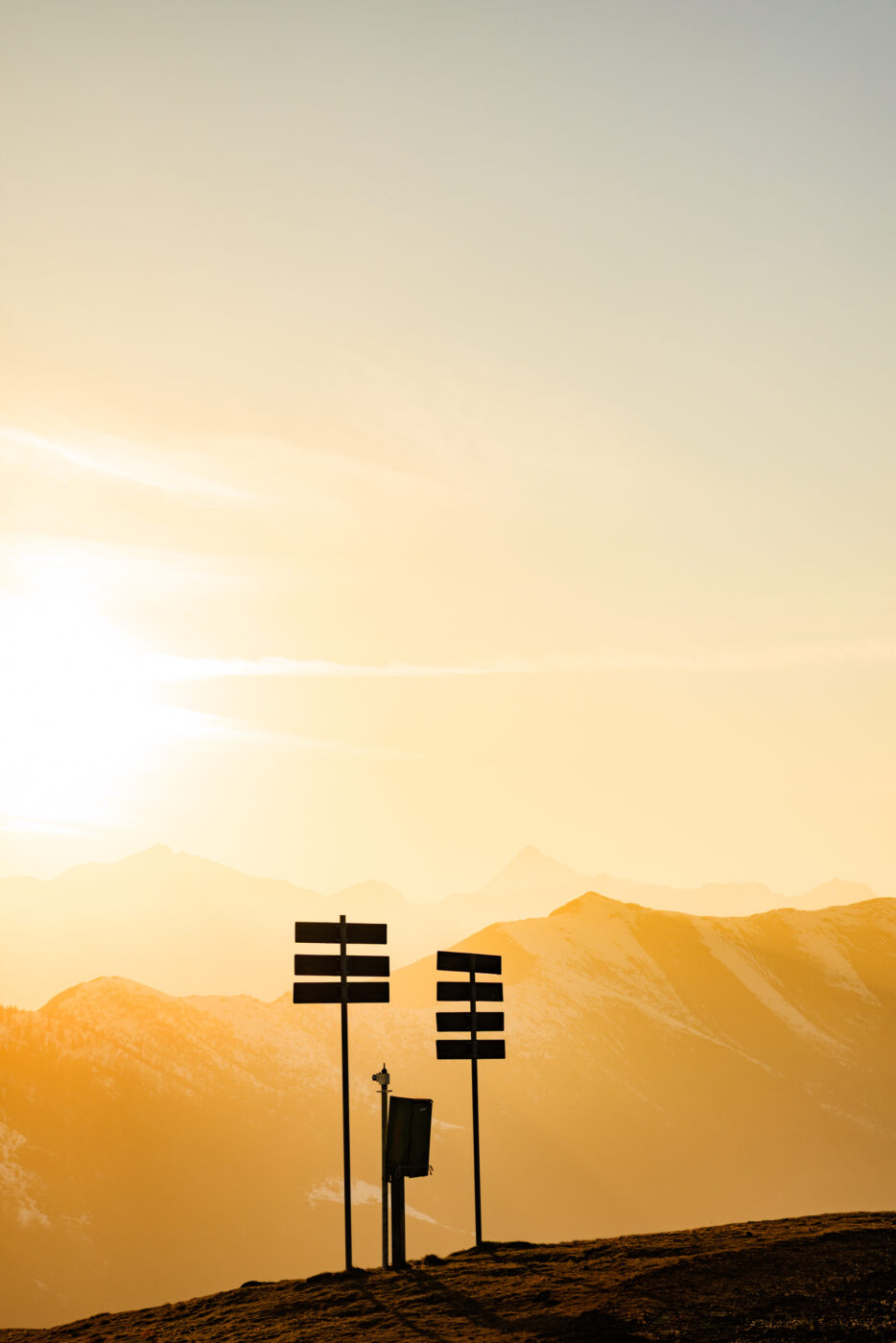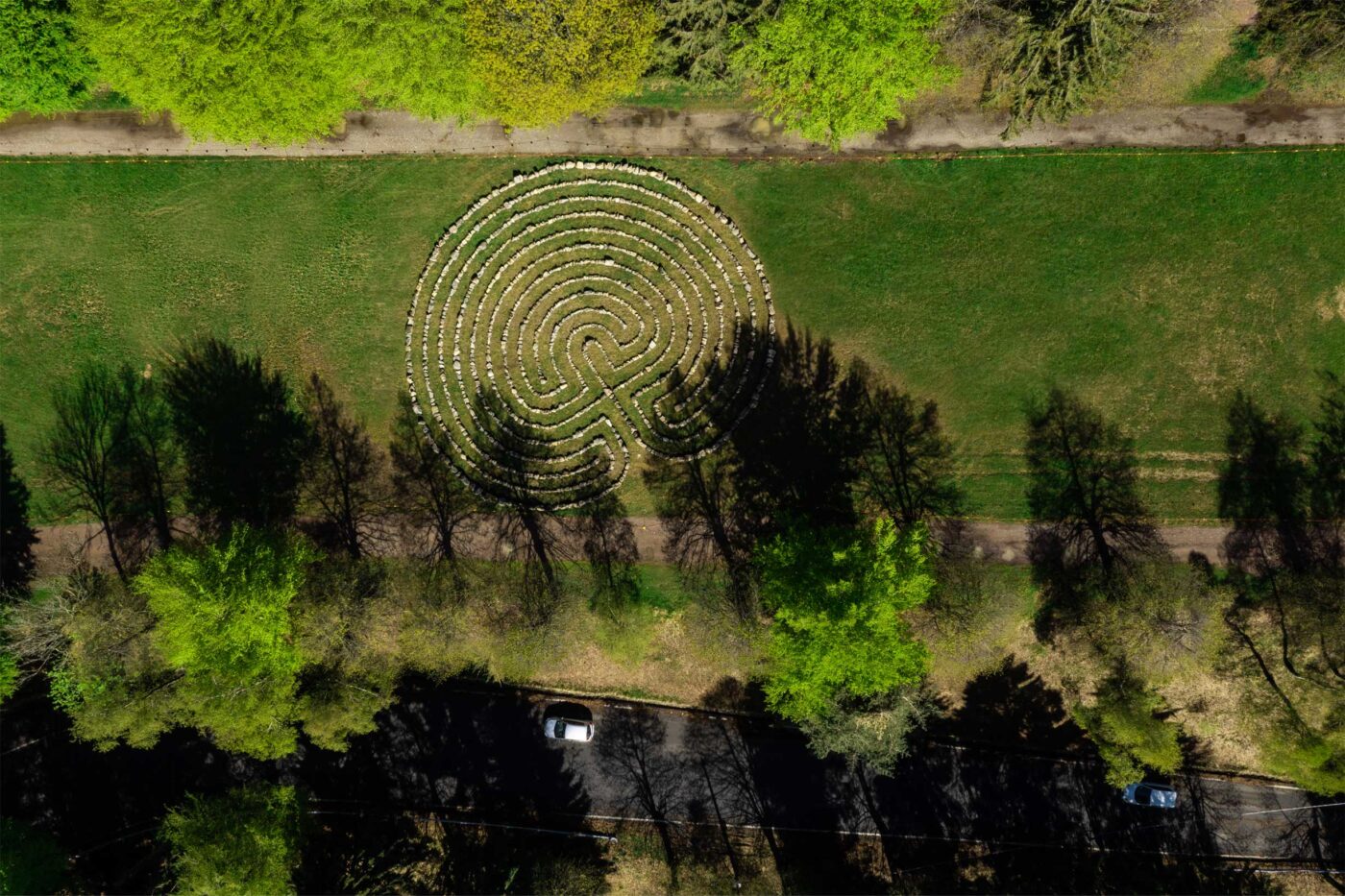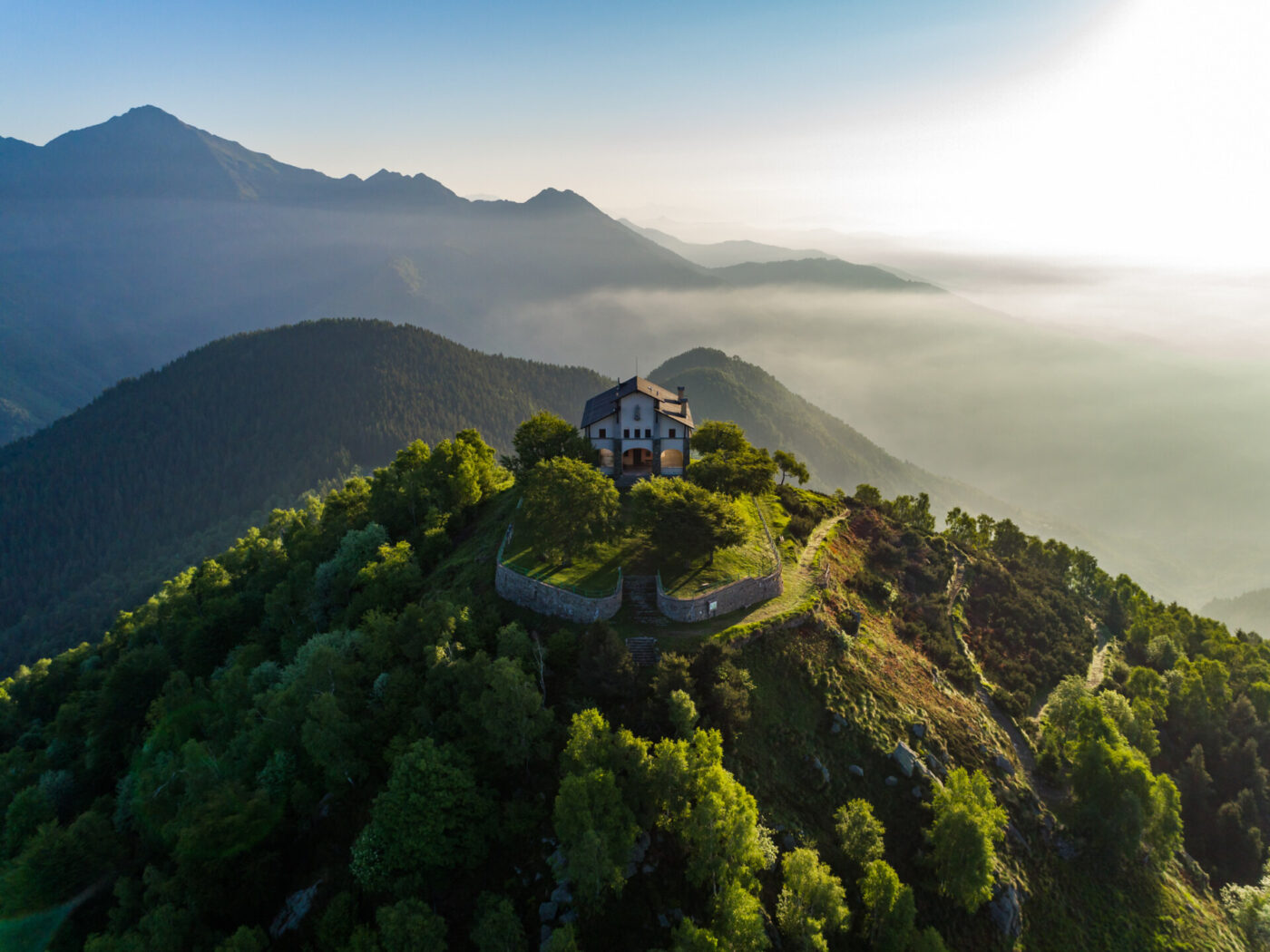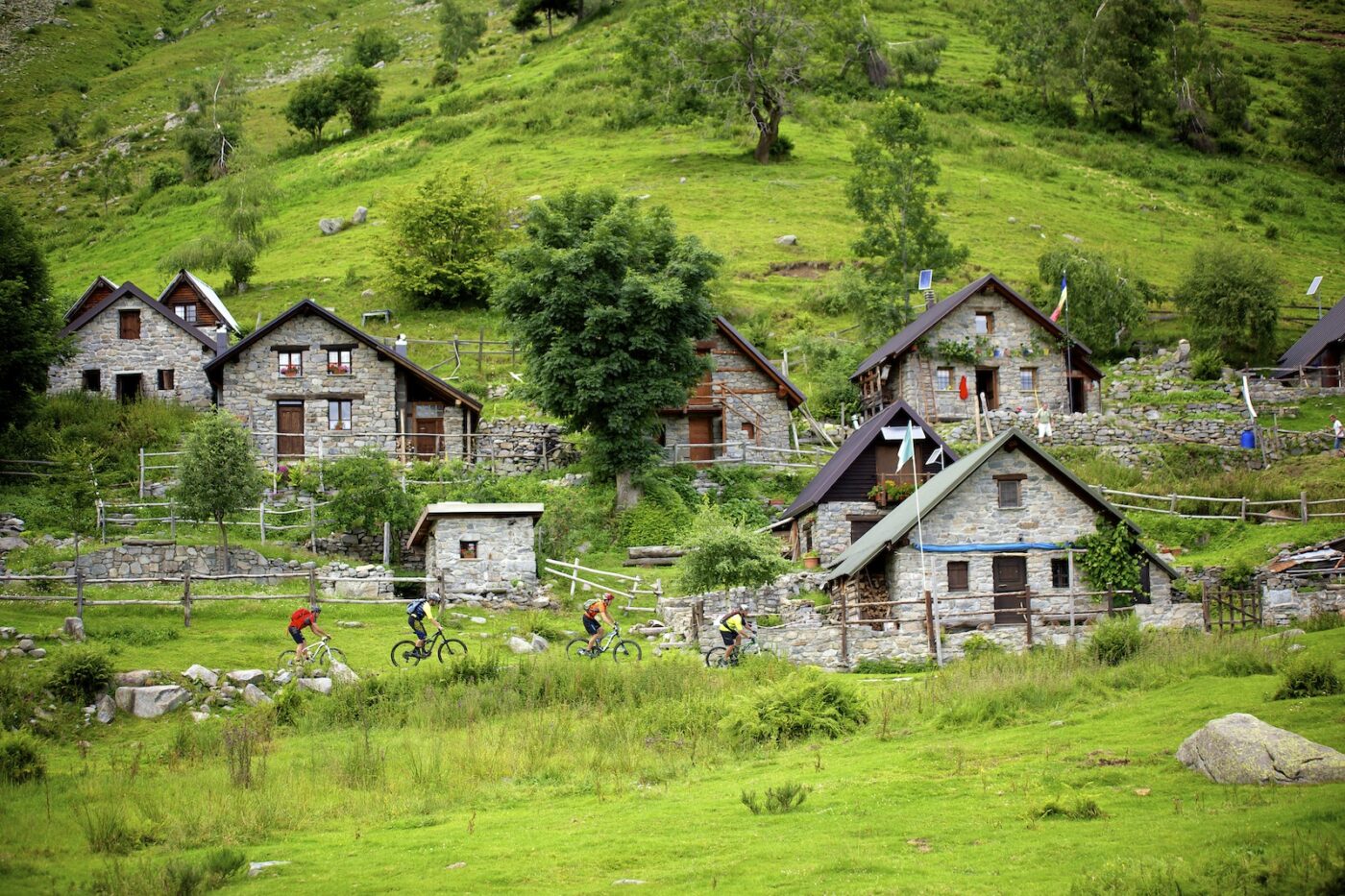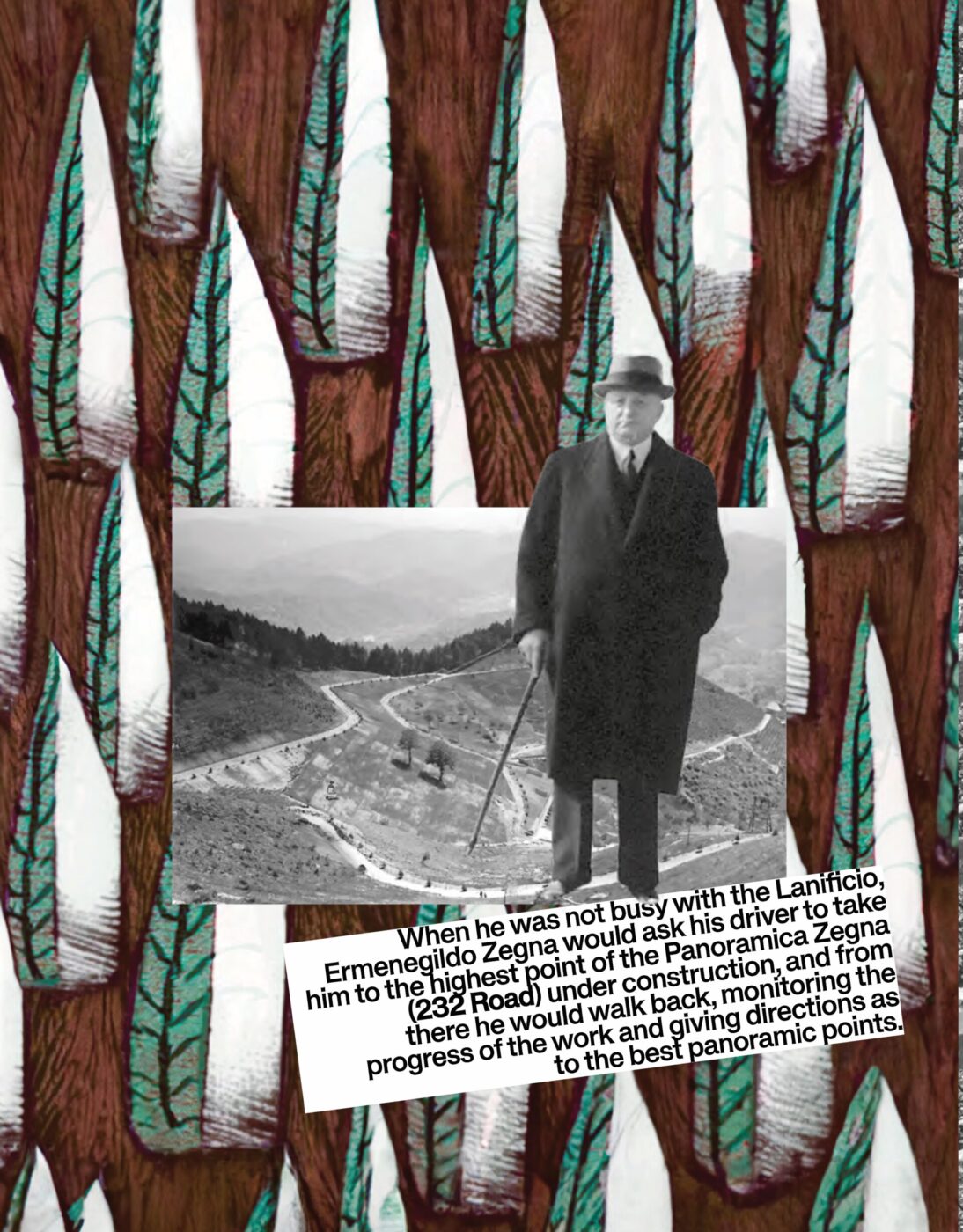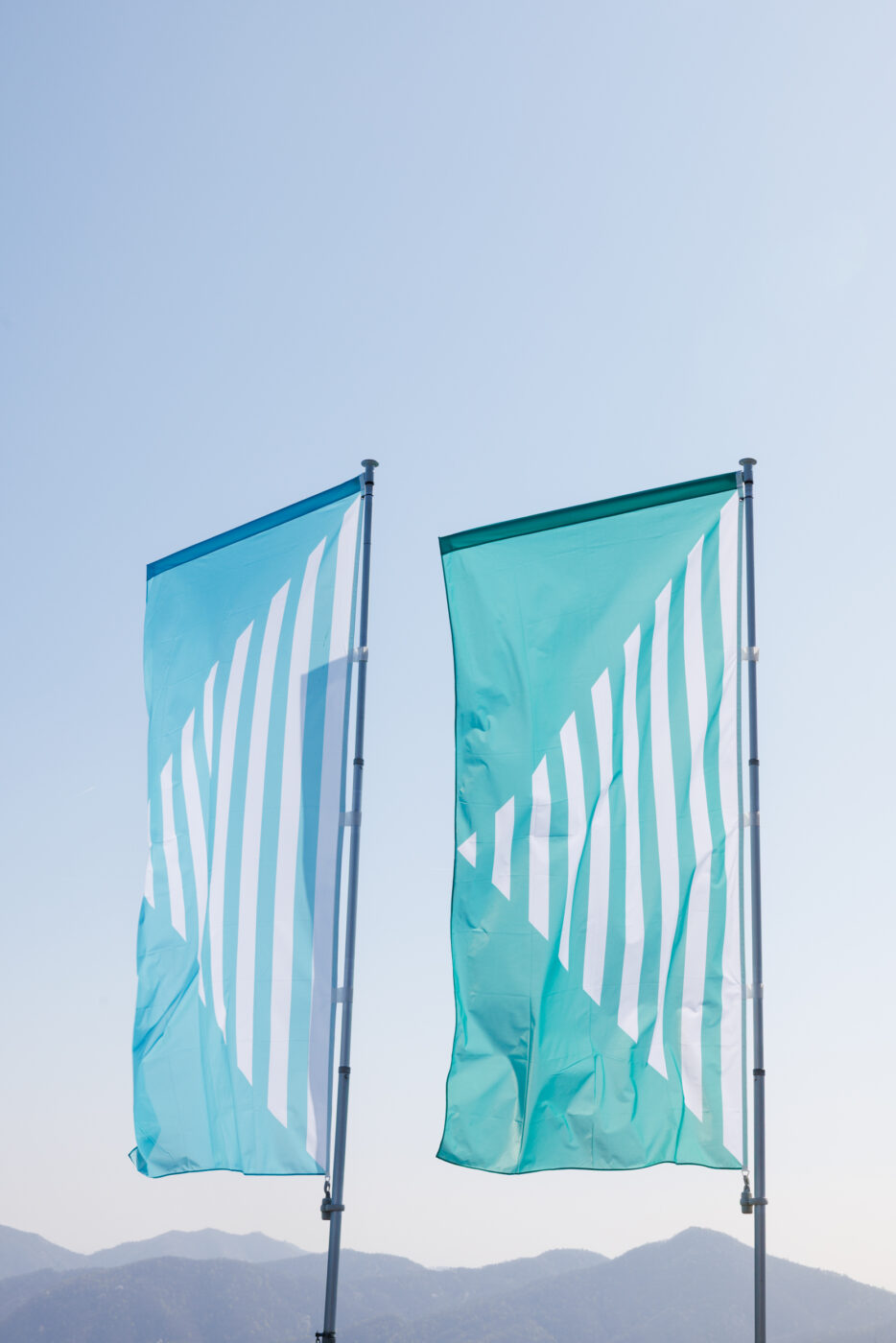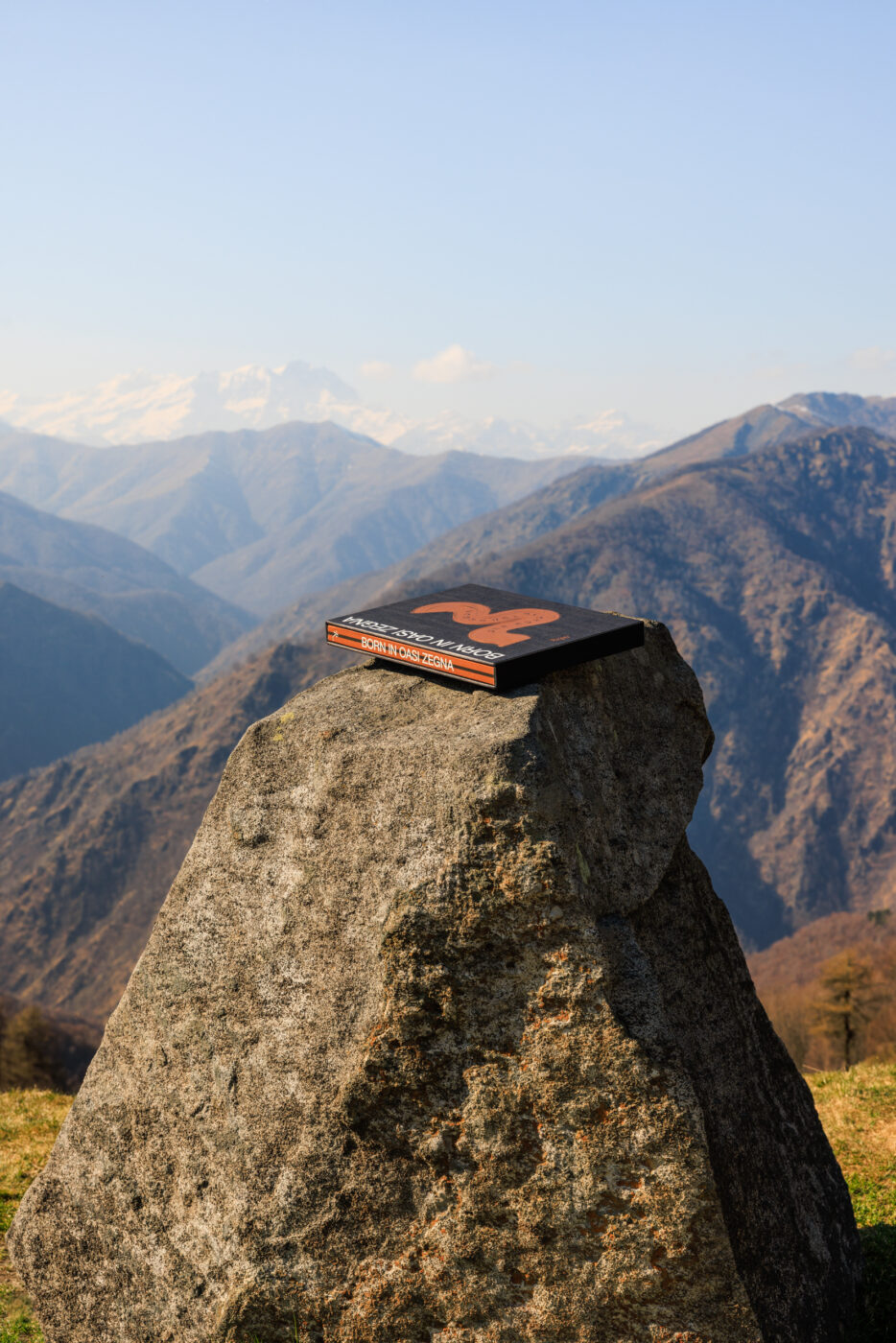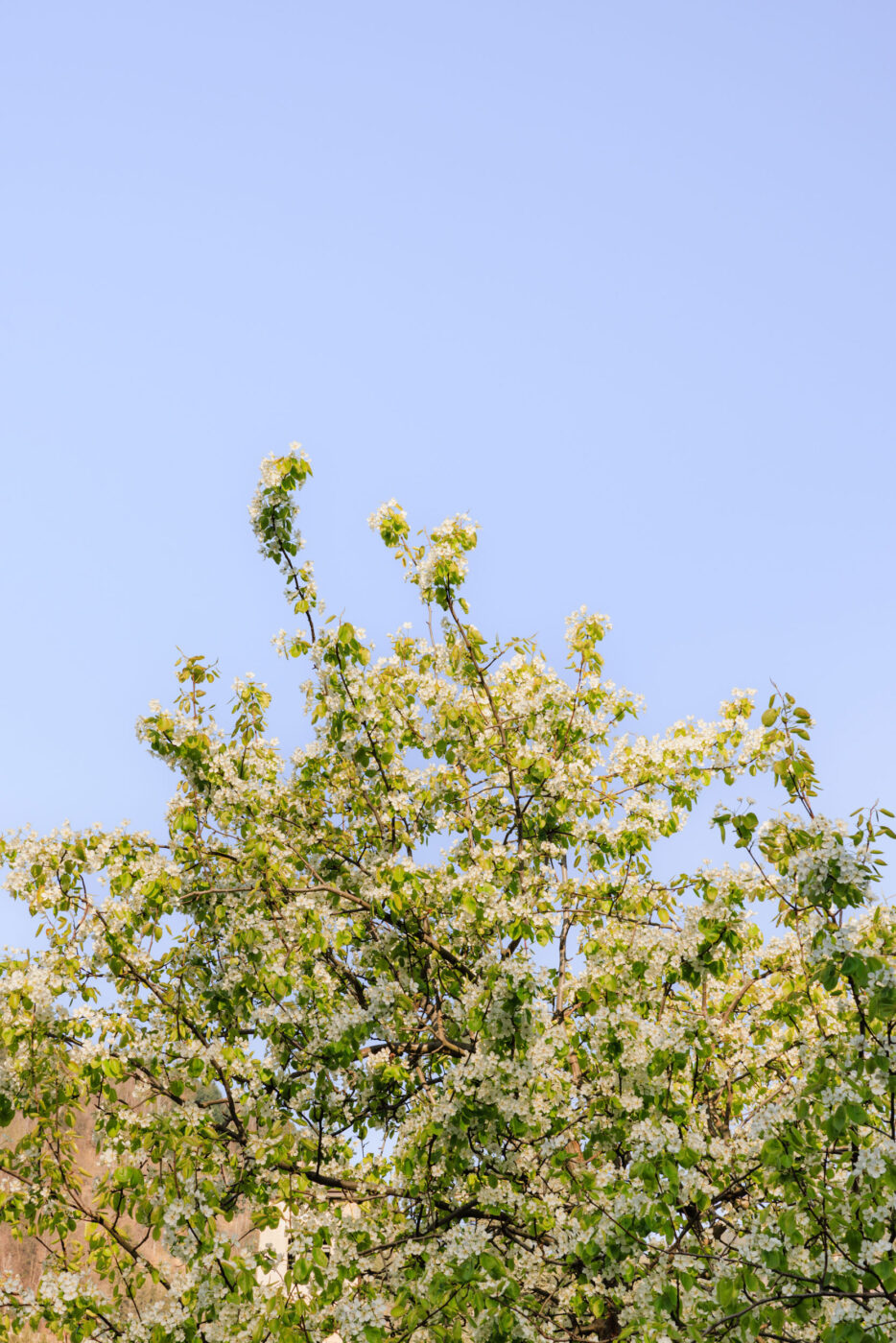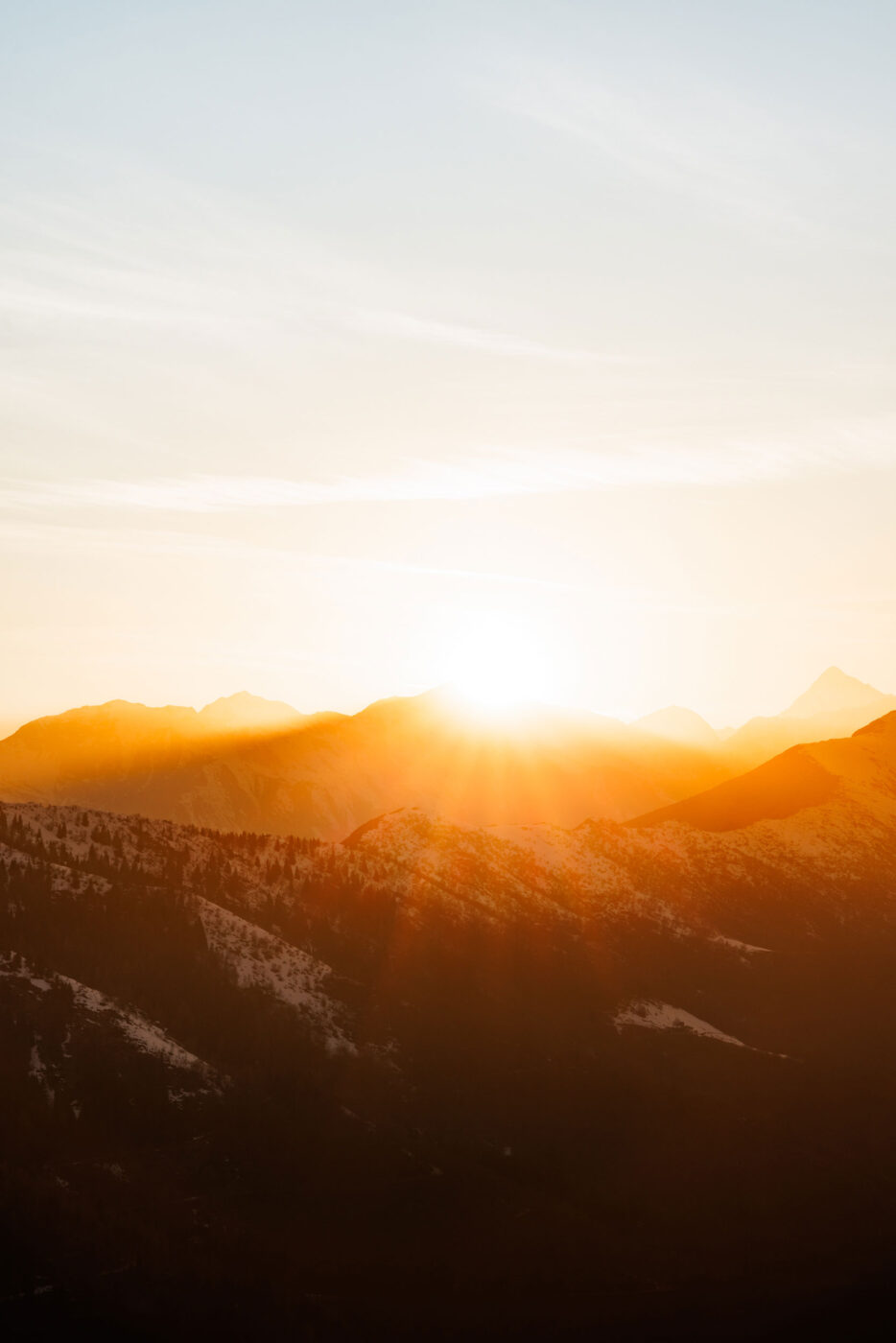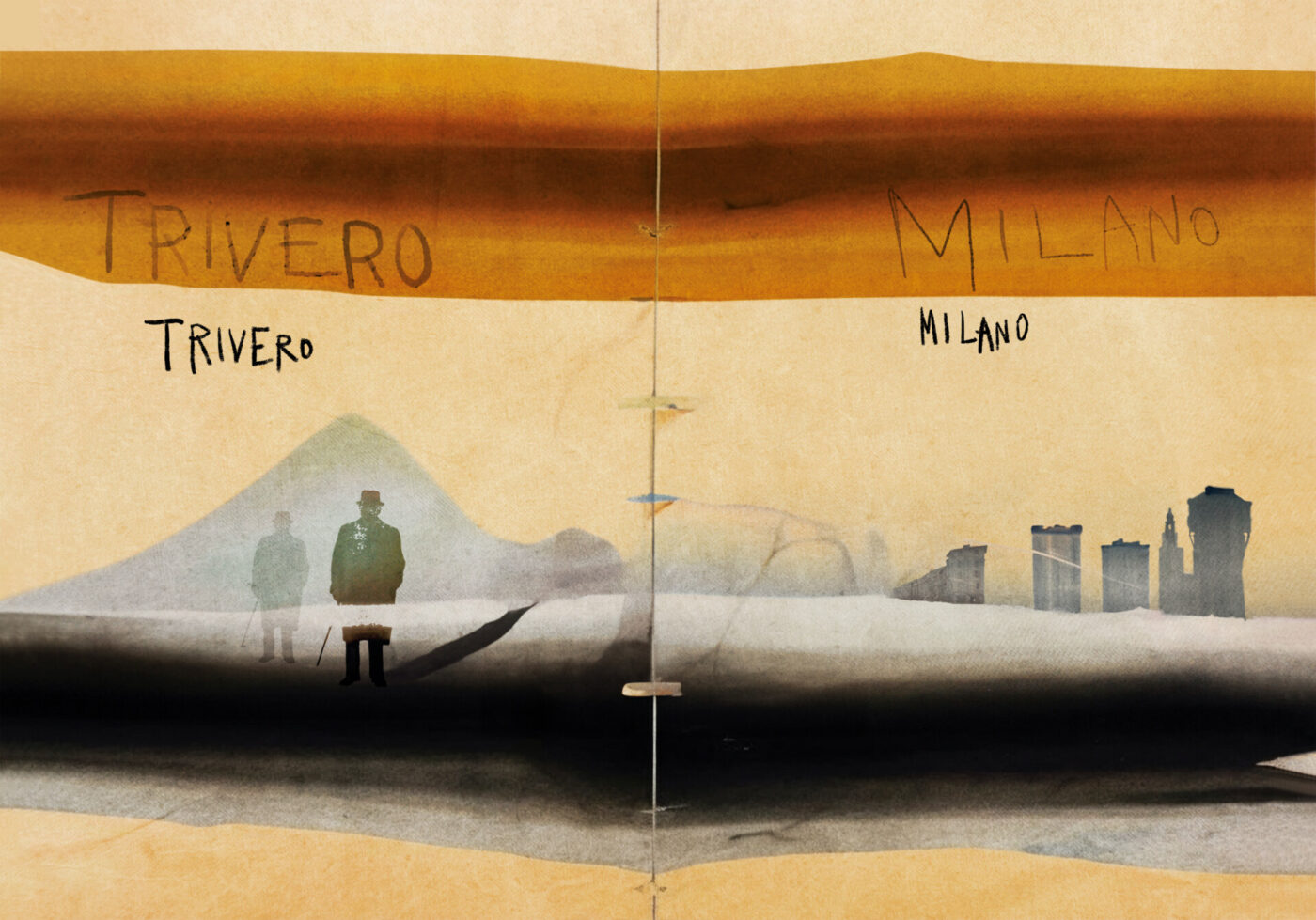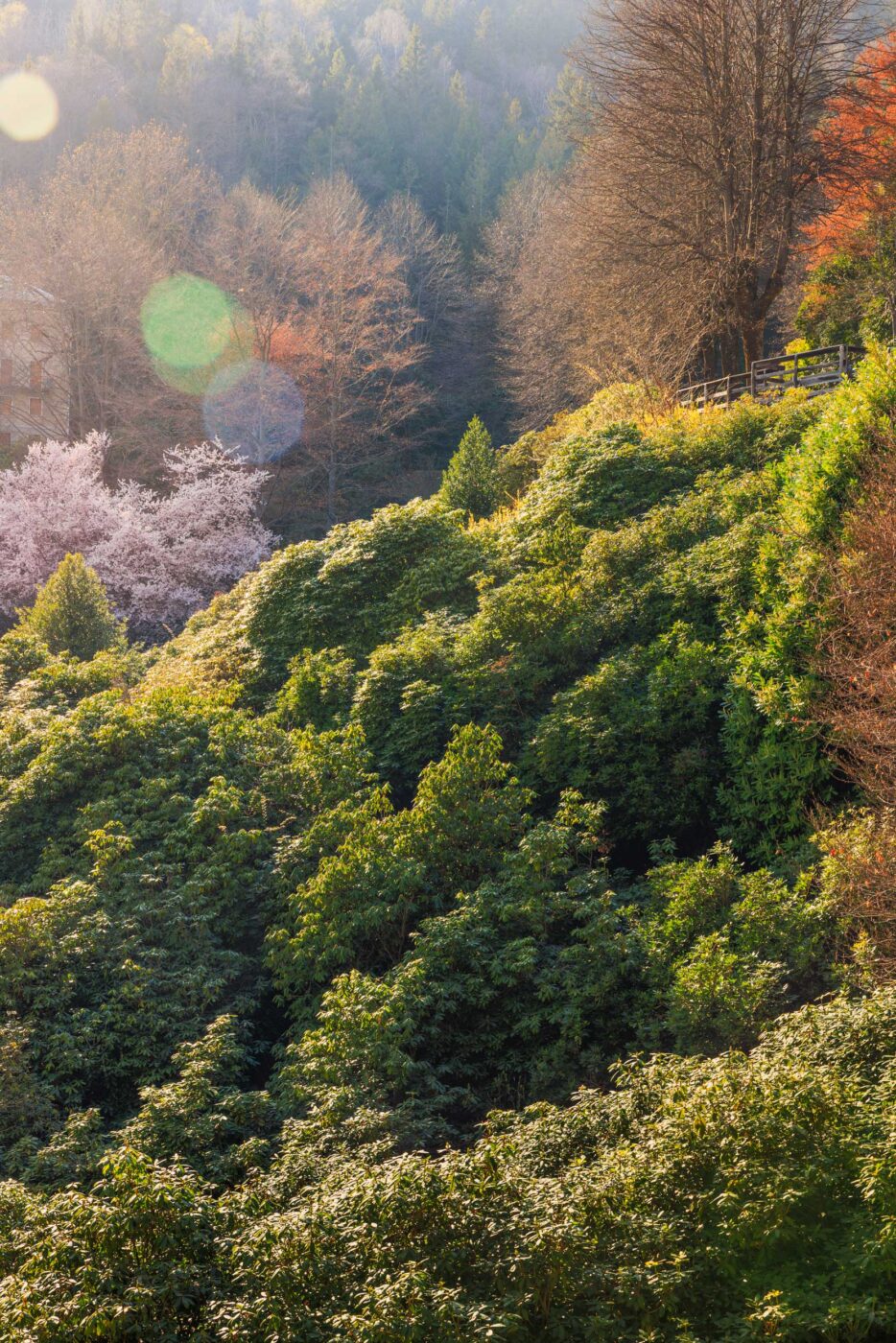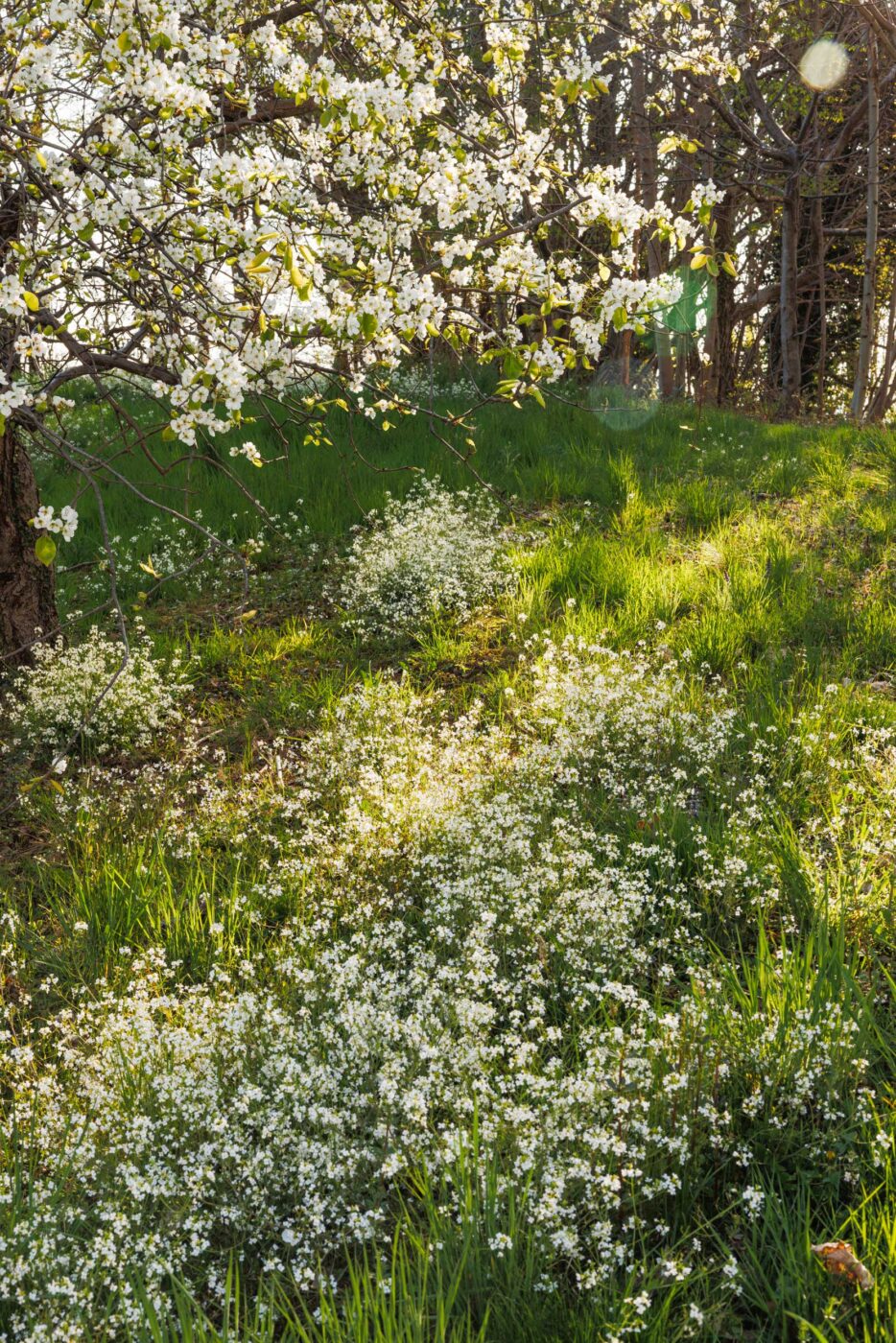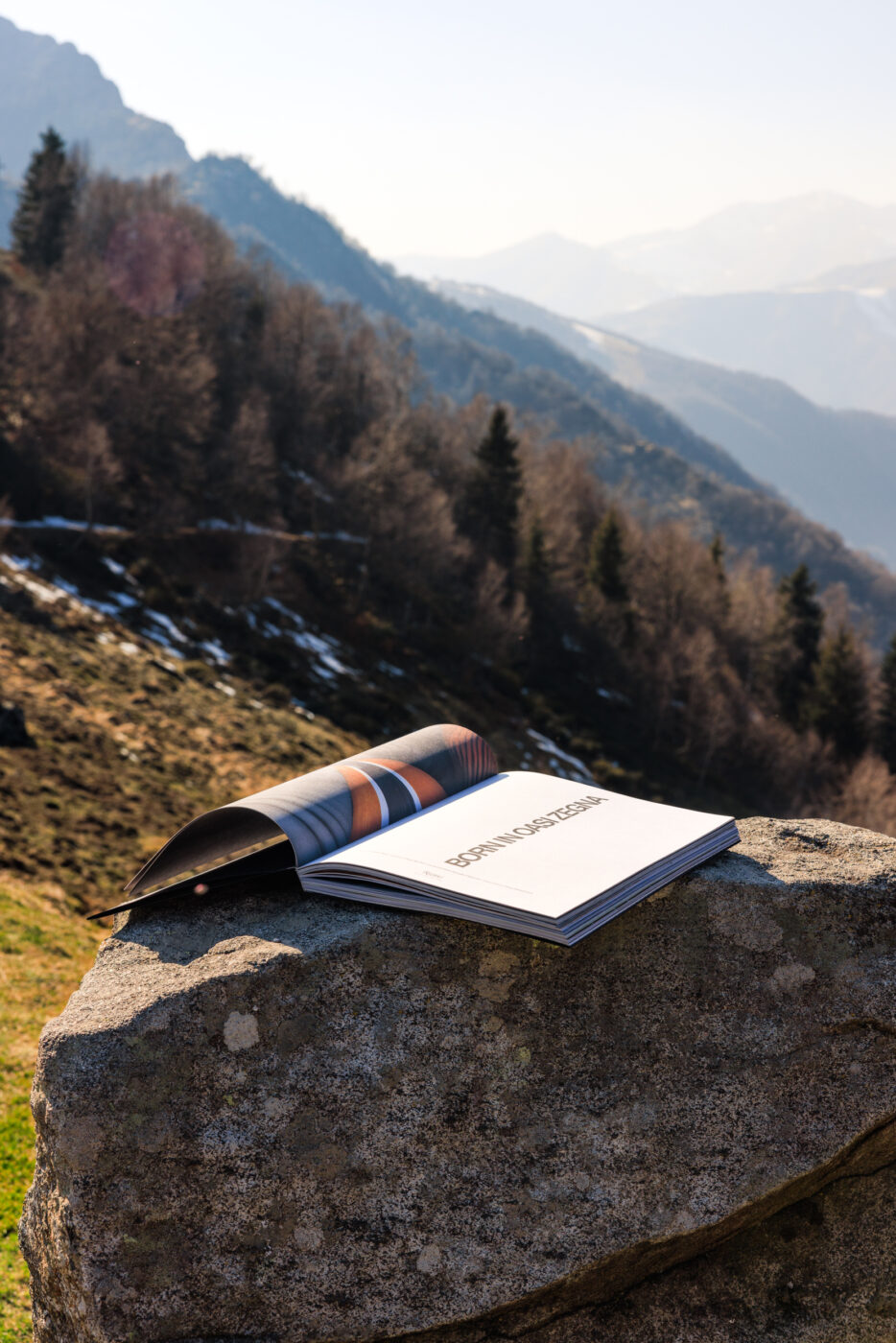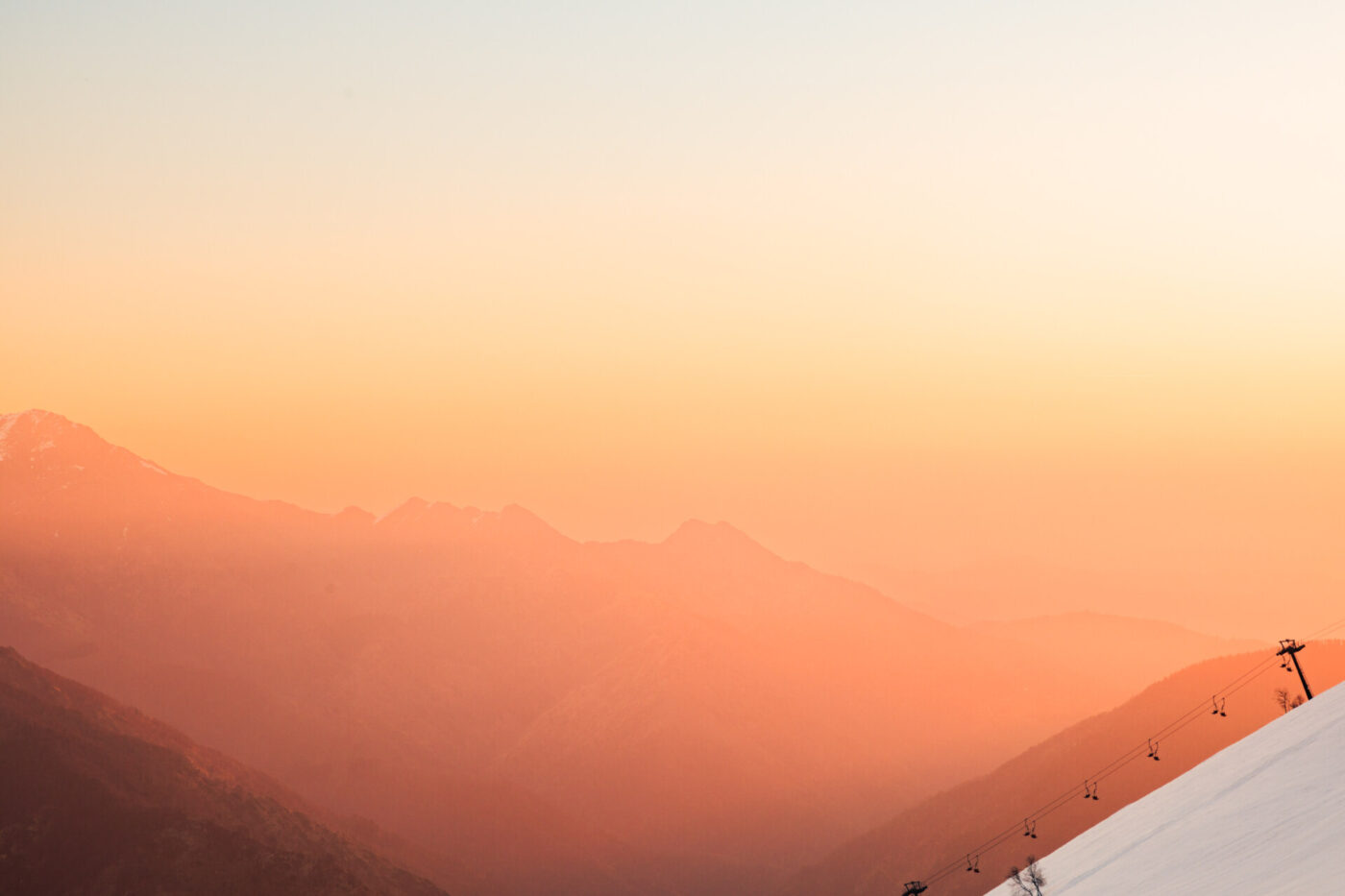You start the morning in a sun-dappled forest, where conifers rise like cathedral columns and the light slips sideways through the trees. Maybe you dip your feet into a stream cold enough to steal your breath and hike through barely trodden alpine ridges to a viewpoint of the pink-hued Monte Rosa. Or you make your way up to snow-dusted Alpine ski slopes where rifugi dole out steaming portions of polenta. On the way back, you come across a 14th-century sanctuary perched above a stone labyrinth. Finally, you end the day driving a winding tree-lined road (Panoramica Zegna) that turns orange as the sun sets through the branches. “Oasis” feels pretty fitting.
Welcome to Oasi Zegna—a 100 square-kilometer patchwork of wild trails, open-access mountain roads, ski slopes, and art installations, stitched across the Biellese Alps in northern Piedmont.
But this isn’t just a park—it’s a philosophy.
It all began with a road. In the 1930s, Ermenegildo Zegna built Strada 232, known today as the Panoramica Zegna, to connect the two sides of the mountain above his wool mill in Trivero. The road—now a 26 km scenic route linking Trivero and Valle Cervo—wound through the hills he had reforested with over 500,000 trees. Today, it has become a symbol of the family’s vision and values, appearing as a brandmark on every Zegna piece.
This guide traces 10 of the most beautiful places across the Oasi—a natural park free and open to all, and a physical manifestation of the values Zegna continues to cultivate. These values—care for nature, commitment to community, and intergenerational responsibility—are expressed through gestures large and small, from reforestation projects to immersive design initiatives.
Take, for example, the Zegna Baby Forest. Since 2010, a tree has been planted in Oasi Zegna for every child born to an employee, a tradition that now spans employees worldwide. In 2024 alone, 80 trees were added to the forest. It’s a testament to Zegna’s belief in nurturing futures—human and ecological alike.
Those same values come alive in Born in Oasi Zegna, a tactile collector’s book that weaves together pop-up landscapes, textured fabrics, and seasonal storytelling across four chapters—spring, summer, autumn, and winter—to express the brand’s deep-rooted bond with land and legacy. More than a book, it’s a kind of living organism: a visual and sensory journey meant to be touched, read, and explored.
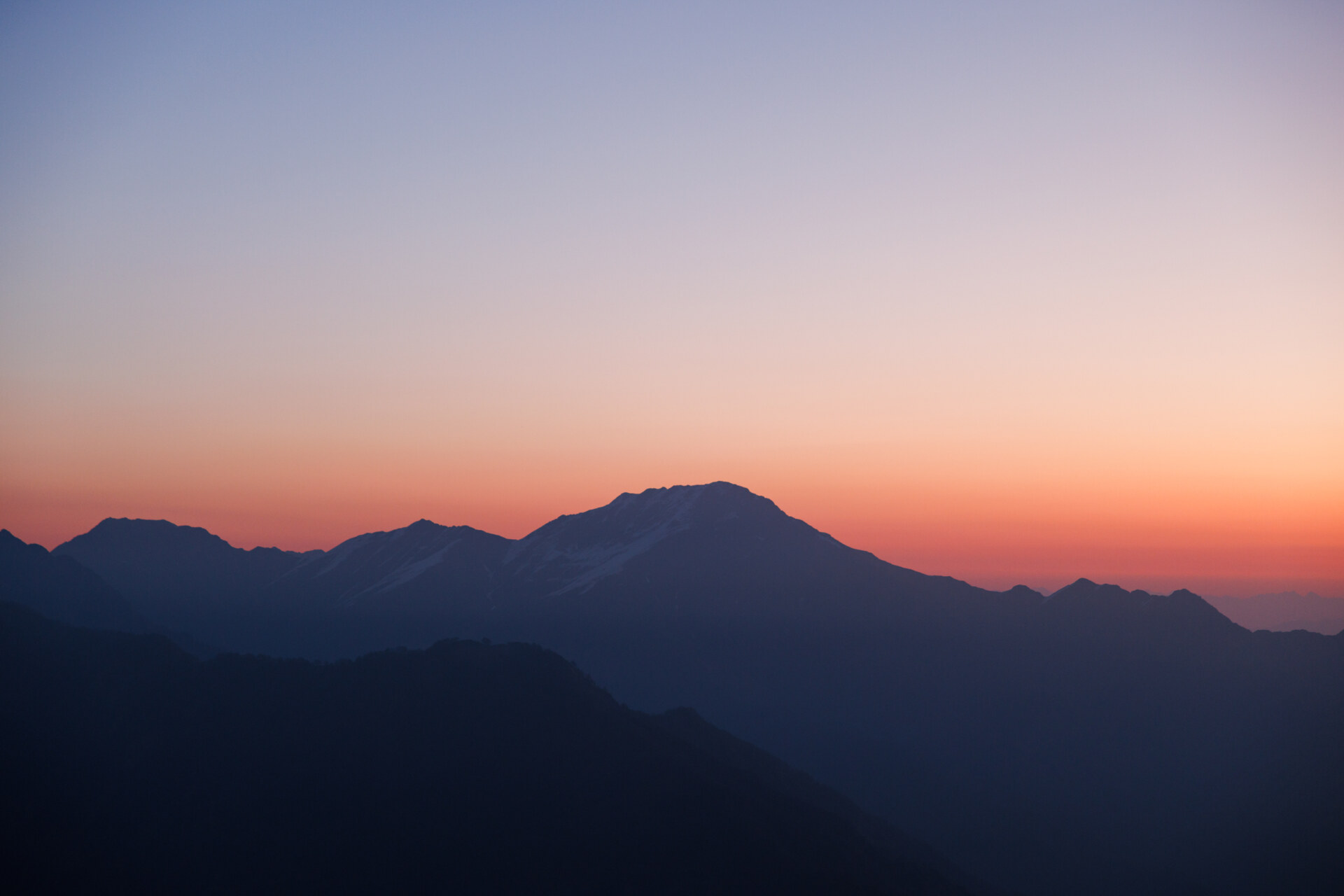
1. Panoramica Zegna
Begin with the road that started it all. Strada 232, also known as Panoramica Zegna, is both infrastructure and icon—Zegna’s founding gesture made visible. From its early 20th-century origins as a community project, it has become the brand’s compass: a scenic artery through the Oasi, now mirrored in the new Zegna brandmark.
As you wind up its curves, you leave behind rooftops and enter an evocative corridor of conifers, ridgelines, and sweeping views across the Biellese Alps.
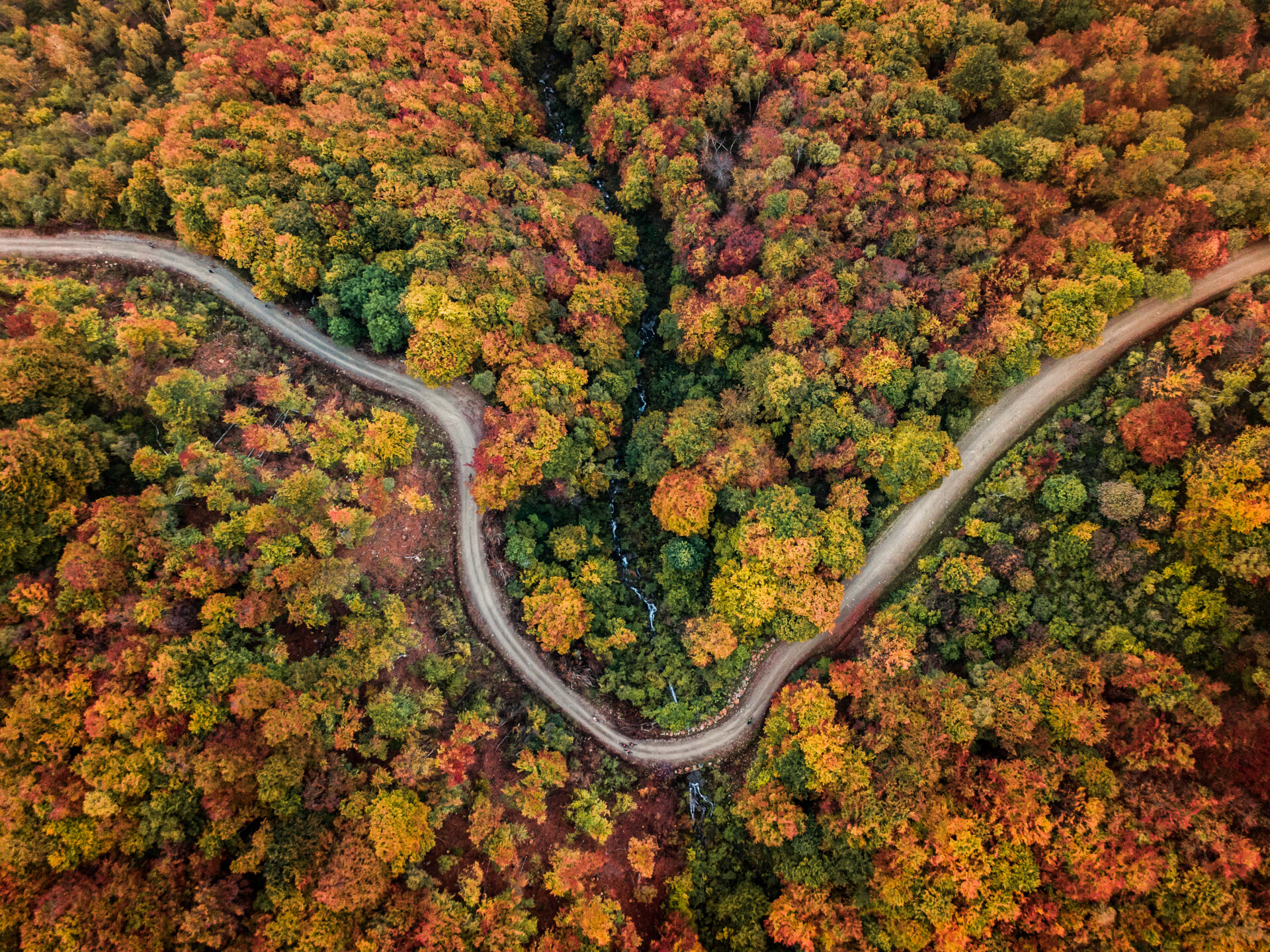
2. The Flags of Daniel Buren
As you wind up the first curves of the Panoramica Zegna, the industrial rooftops of the Lanificio Zegna offer a burst of unexpected color. Fluttering above are 126 vibrant flags forming a prismatic arc from green to blue—Daniel Buren’s Le banderuole colorate, lavoro in situ (Colored Weathervanes, work in situ), created in 2007 and inaugurated as part of the ALL’APERTO public art project in 2008.
Buren—legendary French conceptual artist and Venice Biennale Golden Lion winner—was the first artist commissioned for ALL’APERTO, Fondazione Zegna’s open-air art initiative bringing site-specific works to Trivero and Oasi Zegna. Here in Trivero, Buren’s flags animate the everyday—color against sky, movement against mountain.
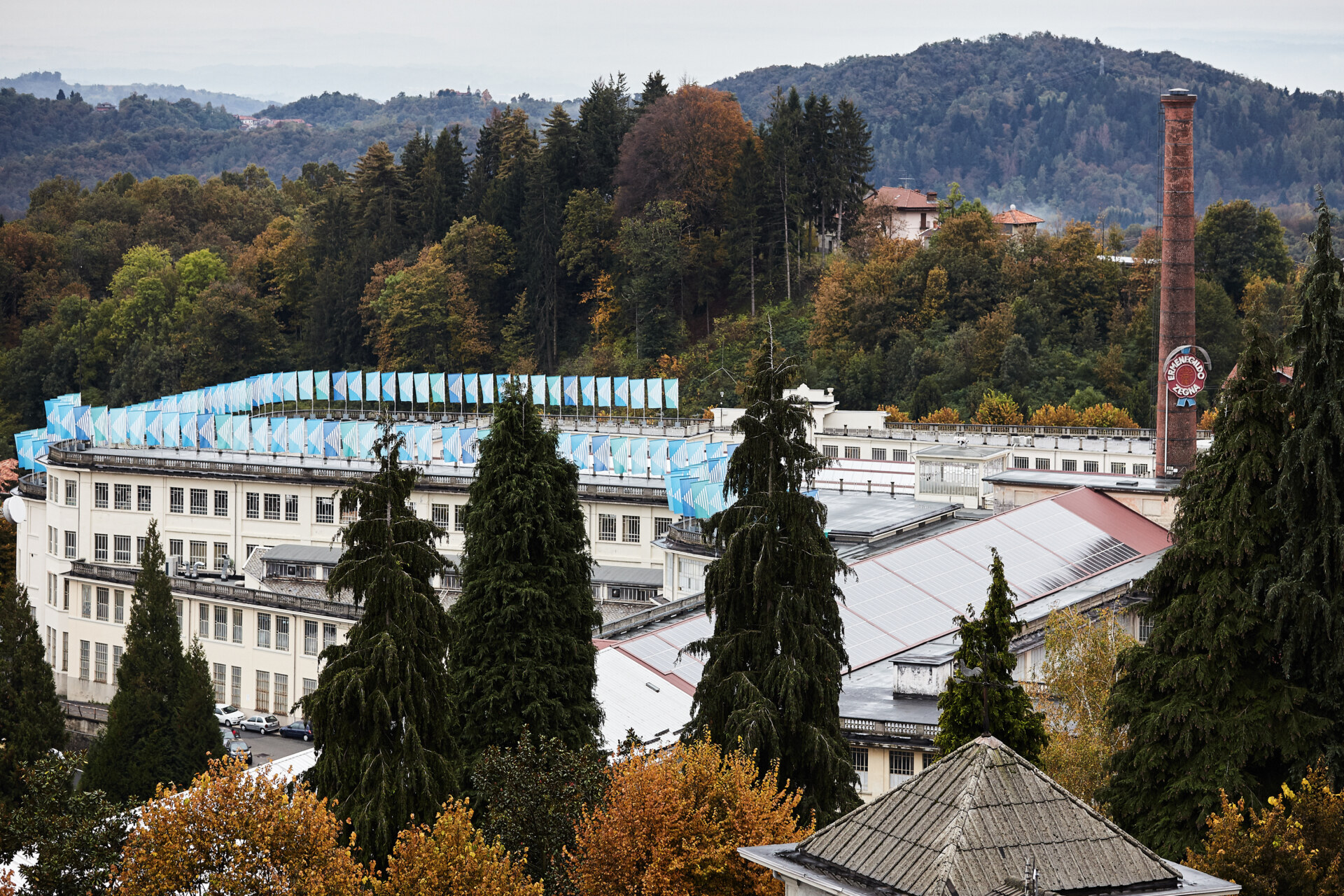
3. The Rhododendron Bowl
The Conca dei Rododendri, or Rhododendron Bowl, is a natural amphitheater of blooms and foliage that shifts in tone with the seasons. In May and June, it erupts in an extraordinary palette of pinks, purples, and reds, thanks to Ermenegildo Zegna’s 1920s vision: to reclaim the hills above Trivero by planting over 500,000 conifers and countless azaleas, dahlias, hydrangeas—and most spectacularly, rhododendrons. The site was sculpted into its present-day form in the 1960s by legendary landscape architect Pietro Porcinai, and it remains one of Oasi Zegna’s most scenographic spots. Even outside of peak bloom, copper beeches, ashes, spiraeas, heather, and camellias keep the basin richly textured year-round, especially in autumn.
Here, you’ll also find Dan Graham’s mirrored glass and steel pavilion, Two Way Mirror / Hedge Arabesque—a permanent installation for the ALL’APERTO project that plays with reflection, transparency, and the shifting mood of the forest around it.
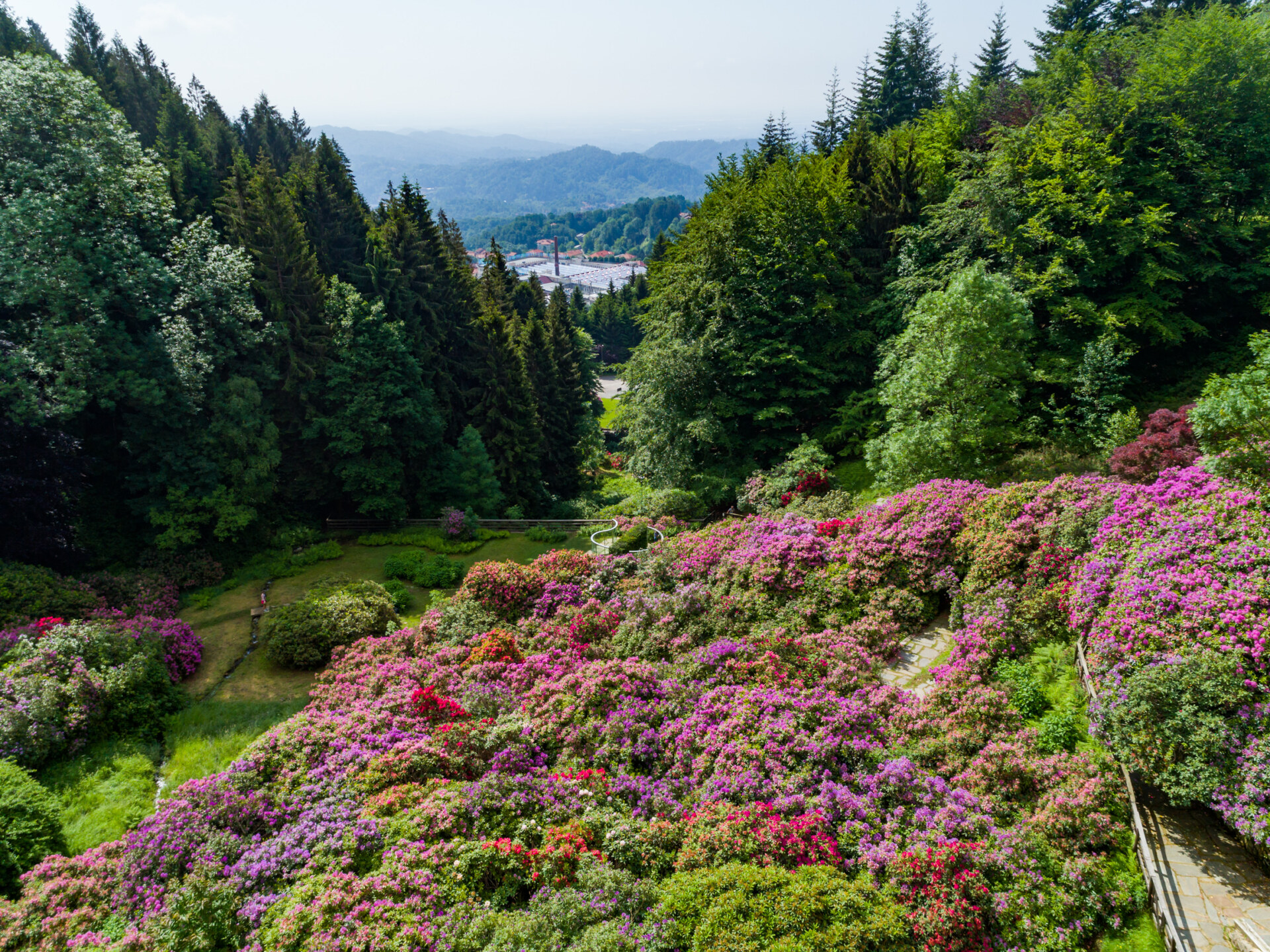
4. Zegna Baby Forest
The Baby Forest began in 2010 as a tribute to new life—both human and ecological. For every child born to a Zegna employee, a tree is planted in the Oasi; a tradition that now spans employees worldwide. In 2024, 80 new trees were added, bringing the total to 1,465.
More than a grove, it’s a growing archive of belonging—each tree marking a name, a future, a commitment to continuity. Nurtured over the seasons, these trees reflect Zegna’s long view: that responsibility isn’t just inherited, but planted and cultivated over time.
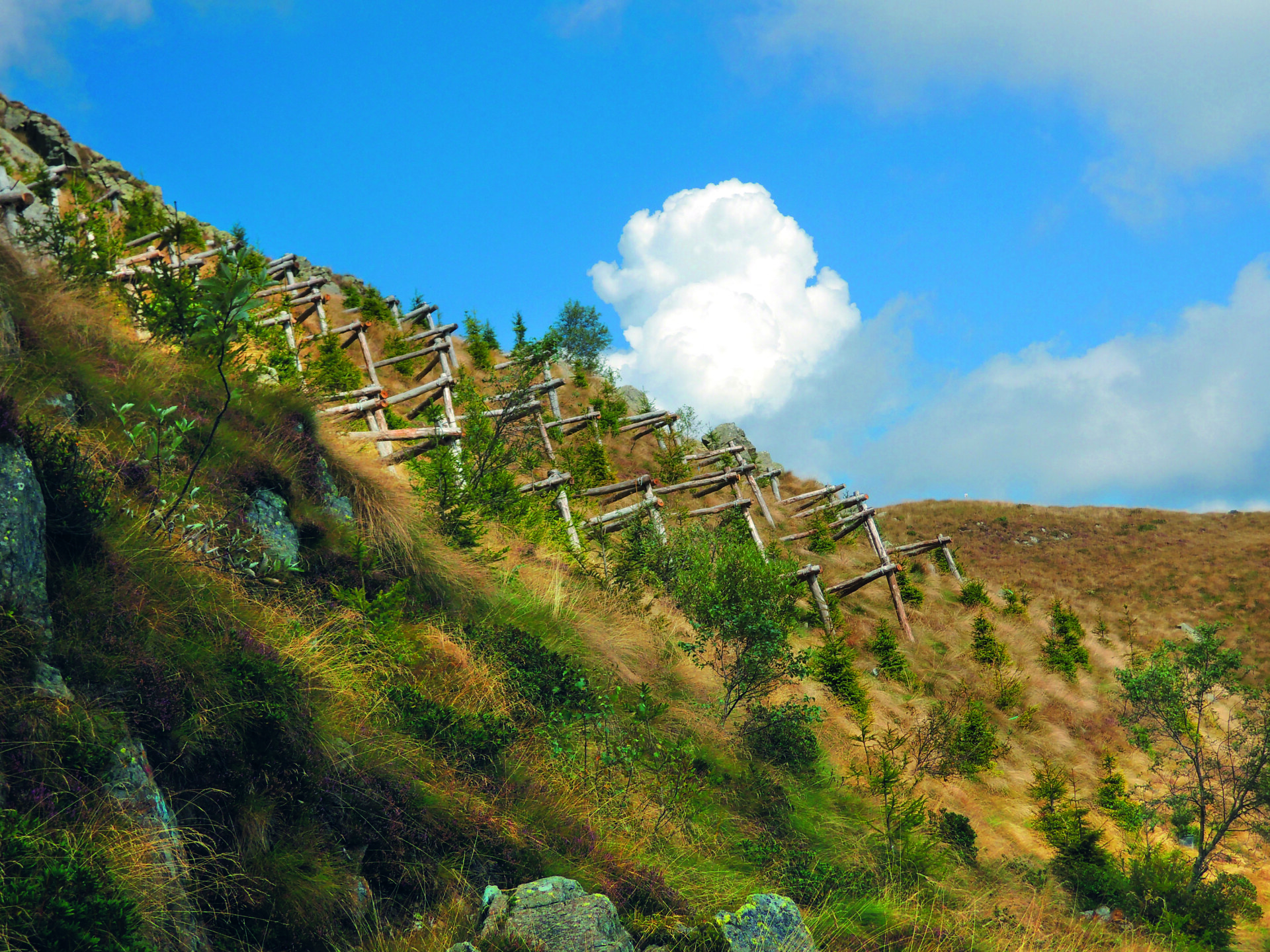
5. Bielmonte
Bielmonte is the heart of Oasi Zegna—a natural balcony at 1,500 meters with sweeping views over the Po Valley and the Alps. Created by Ermenegildo Zegna in the 1950s, it quickly became a favorite for families. In winter, it’s a haven for snow lovers of all ages, with downhill and cross-country trails, two ski schools, and activities like Winter Bielmonte Kids. Athletes train at the Ski Racing Center, while snowshoeing trails offer slower ways to explore the landscape—even by moonlight.
In summer, Bielmonte shifts pace with panoramic hikes, Nordic walking routes, mountain biking trails, and horseback rides. It’s a place for forest bathing, sports, and easy adventure—whatever your season, whatever your rhythm.
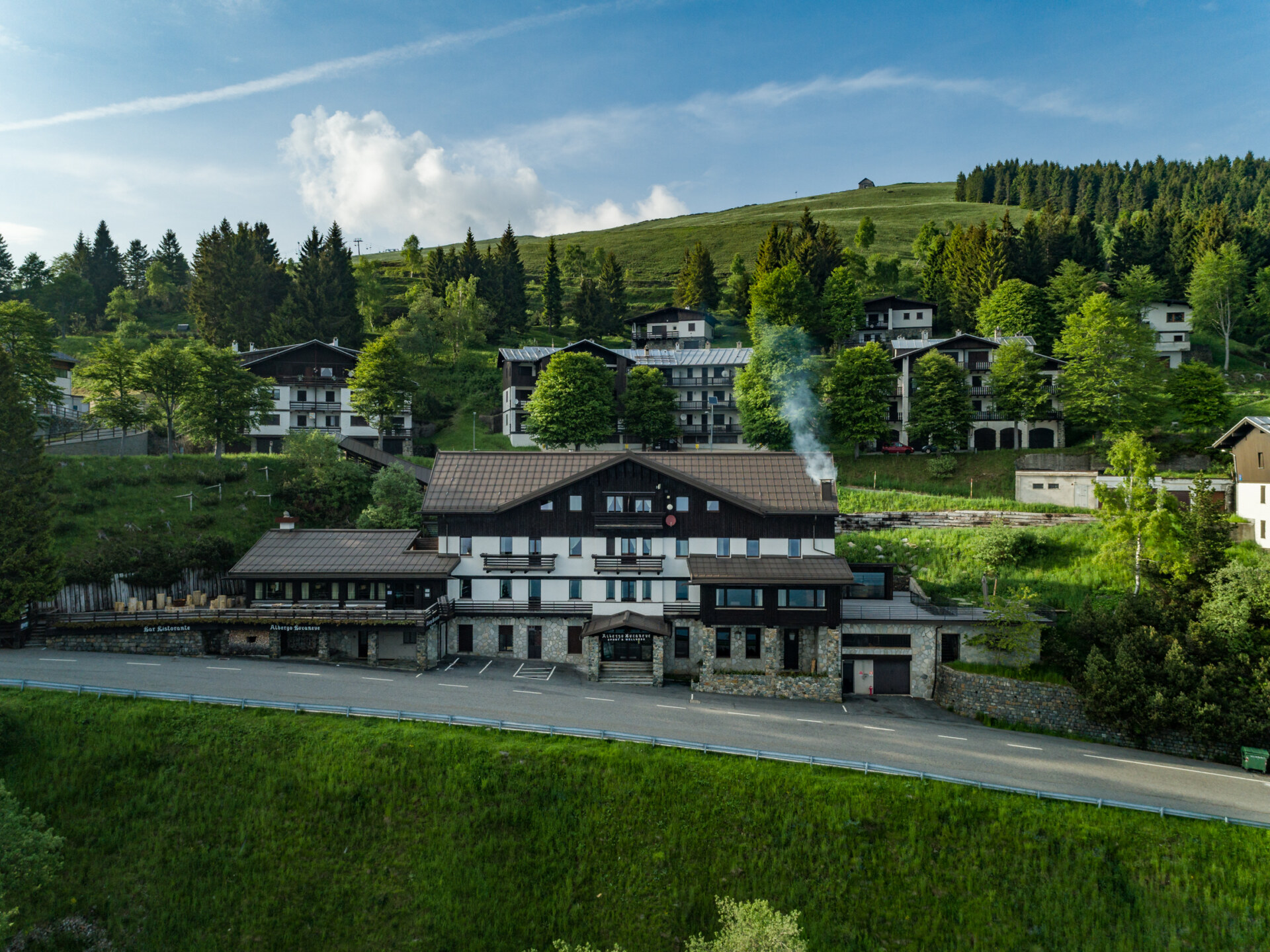
6. Sunset over Monterosa
At the highest point of the Panoramica Zegna, the road opens to a breathtaking view: Monterosa rising on the horizon. As the sun sets, it slips behind the mountain in a blaze of amber. And even when clouds veil the summit, you can still make out its solemn silhouette.
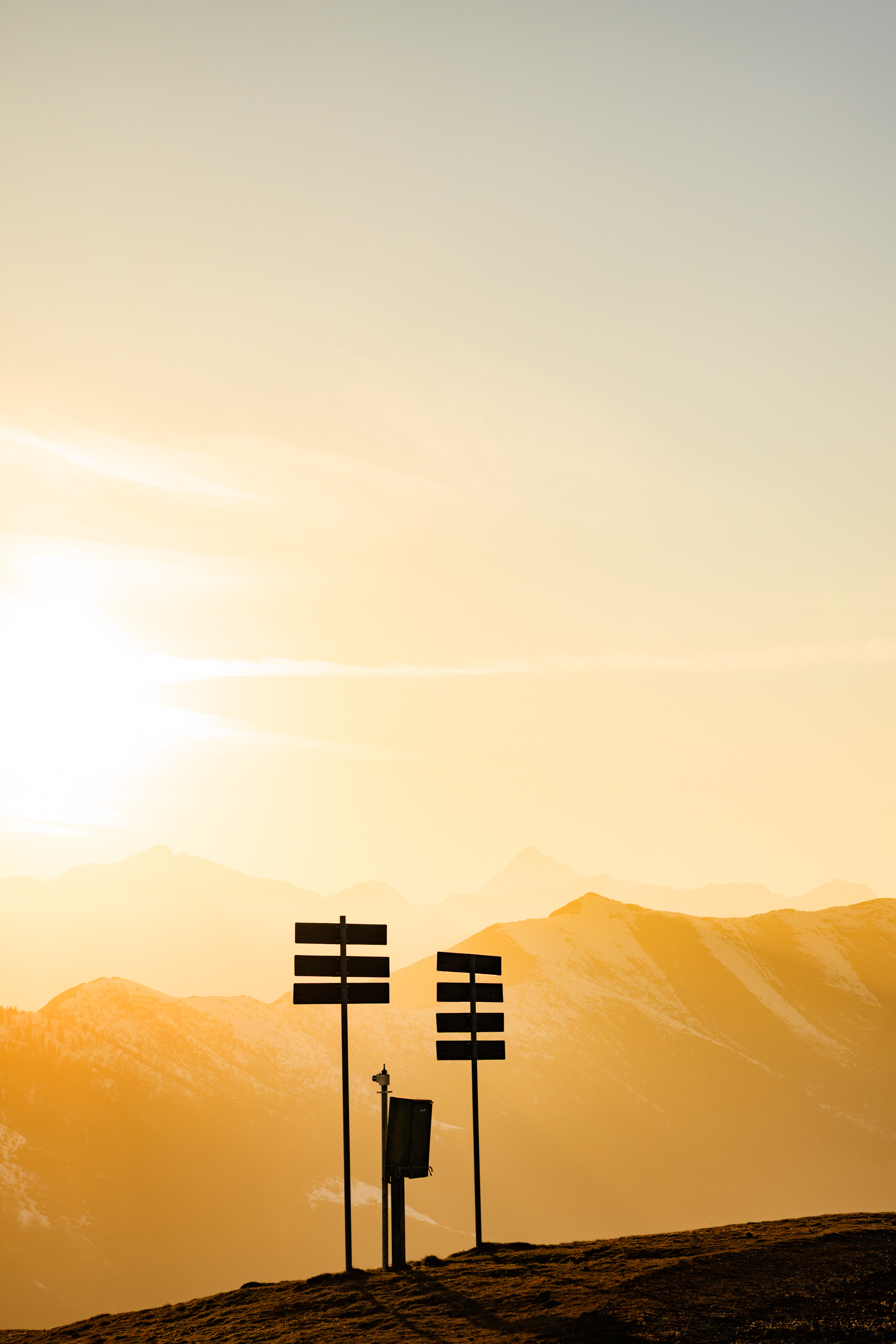
7. Stavello’s Labyrinth
On a former bocce court, the Labirinto di Stavello (Stavello’s Labyrinth) is a 29-meter-wide spiral of stone, its great sinuous path coiling outward from a vincastro—a shepherd’s crook—planted at its center, symbolizing balance and guidance. The labyrinth’s shape echoes a universal language: from galaxies and whirlpools to unfurling ferns and curling ram horns, the spiral is everywhere in nature—a force that moves from within, ever outward. Across time and geography, labyrinths have carried sacred meaning, appearing on rock faces, cathedral floors, church walls, and in open landscapes like this one. Walk it slowly, meditatively. “Solvitur ambulando,” wrote Saint Augustine: it is solved by walking.
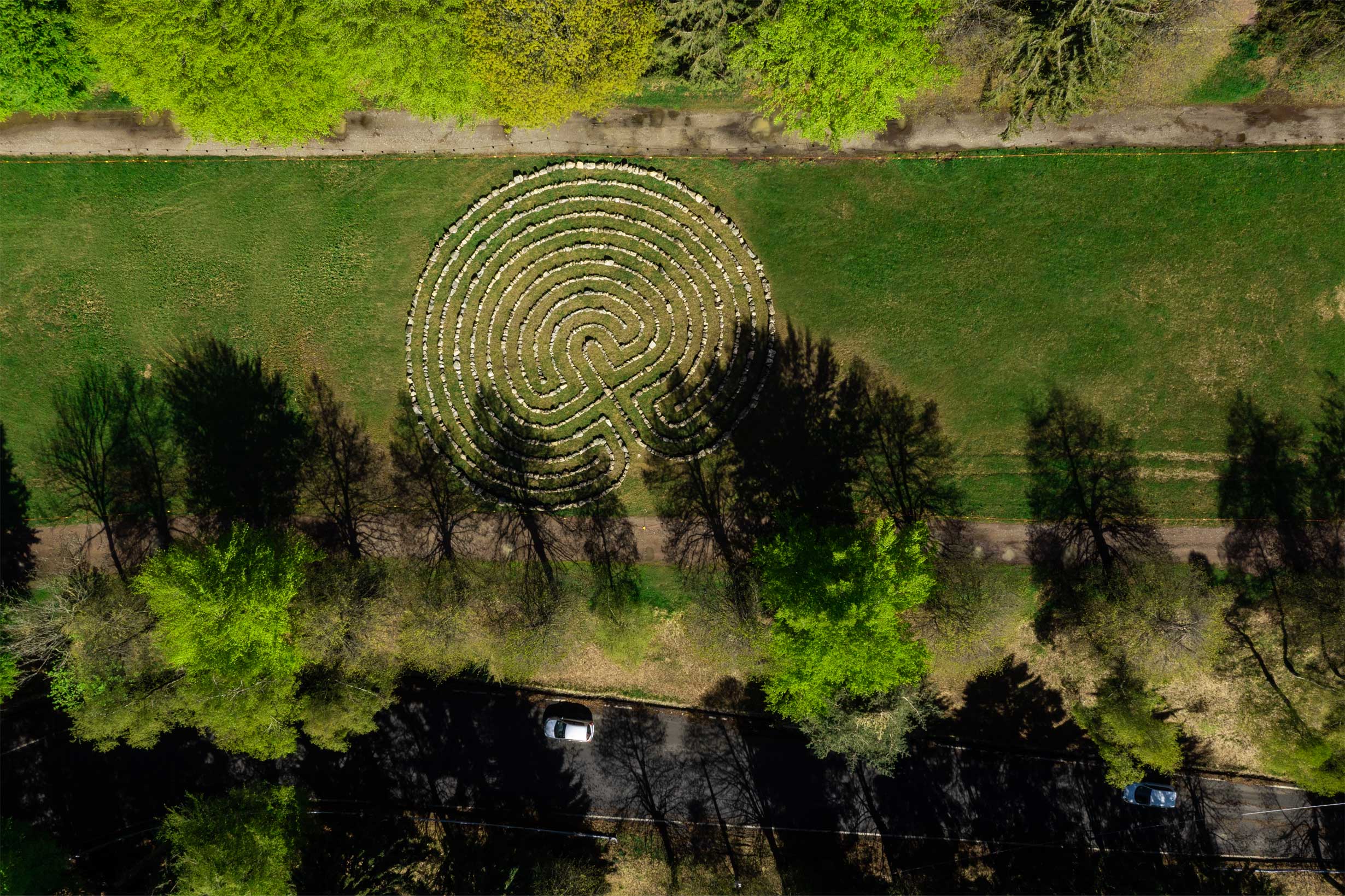
8. San Bernardo Sanctuary
Perched on Monte Rubello, the Santuario di San Bernardo (San Bernardo Sanctuary) stands on storied ground. According to legend, it was first built in the 14th century in just 50 hours, using the ruins of Dolcinian fortifications to mark the Church’s triumph over Fra Dolcino—the radical friar condemned to the stake with his companion Margherita, and immortalized in Dante’s Divine Comedy.
Expanded over centuries and reshaped in 1948 through the vision of Ermenegildo Zegna, the oratory now opens onto sweeping views of the Po Valley and the Alps. It’s a peaceful climb on foot from Bocchetta di Stavello or Bocchetta di Margosio, and a rewarding stop along one of the area’s longer trekking routes through the Valsessera.
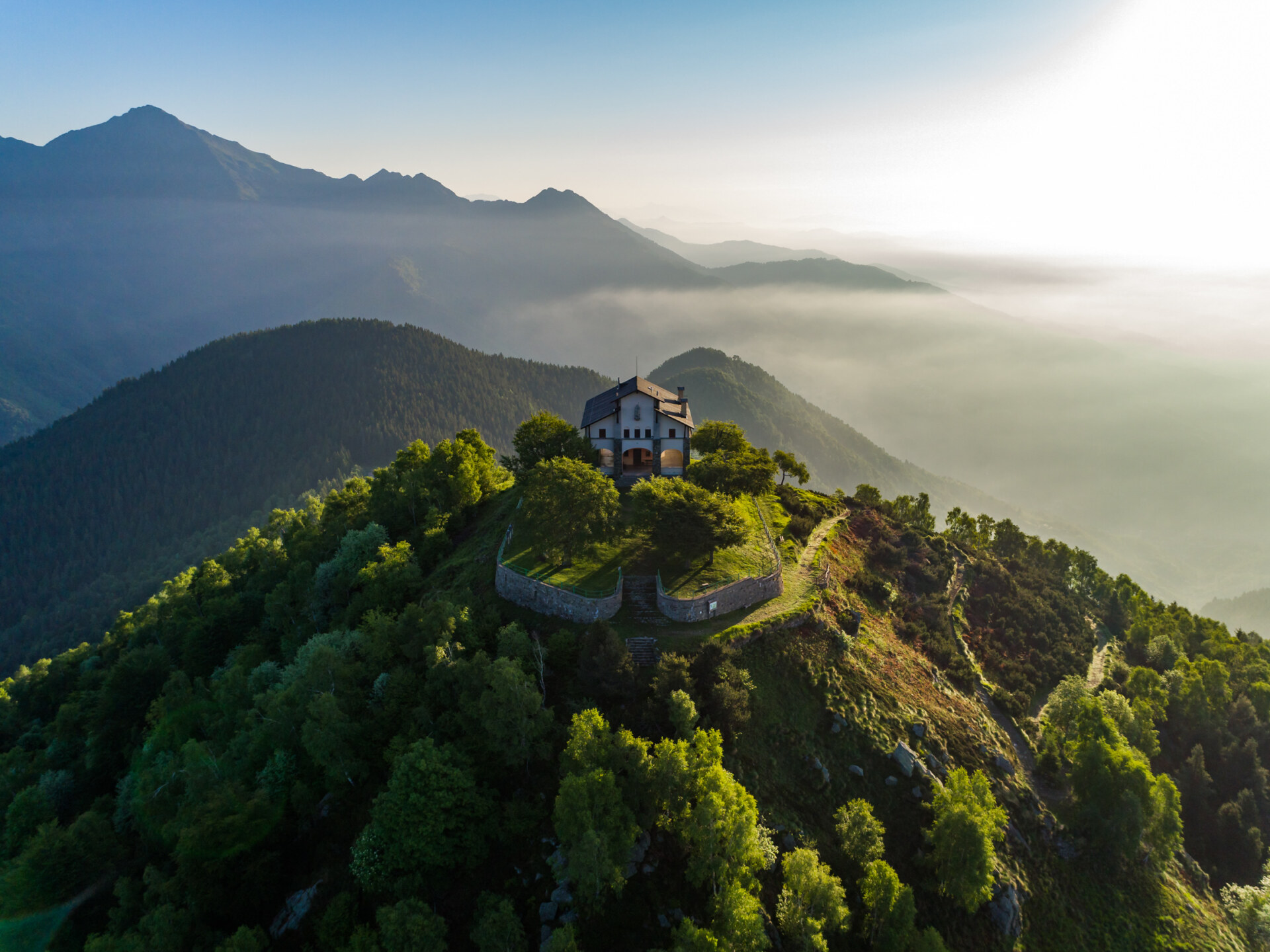
9. Sunrise at Rifugio Monte Marca
At 1,616 meters, Rifugio Monte Marca sits on the highest peak above Bielmonte, where views stretch from Monviso to Monte Rosa. Designed in 1956 by Ernesto Giuliano Armani, it’s reachable by foot or chairlift and offers 360° views, traditional mountain food, and a great home base for hiking in the summer or skiing in the winter. Stay the night in one of seven cozy rooms and linger by the fire with a plate of polenta, or just come for the sunrise. If weather and visibility allow, catch the ethereal alpenglow on Monte Rosa. As Italy’s second-highest mountain, its snowy ridges blush with pink light at dawn.
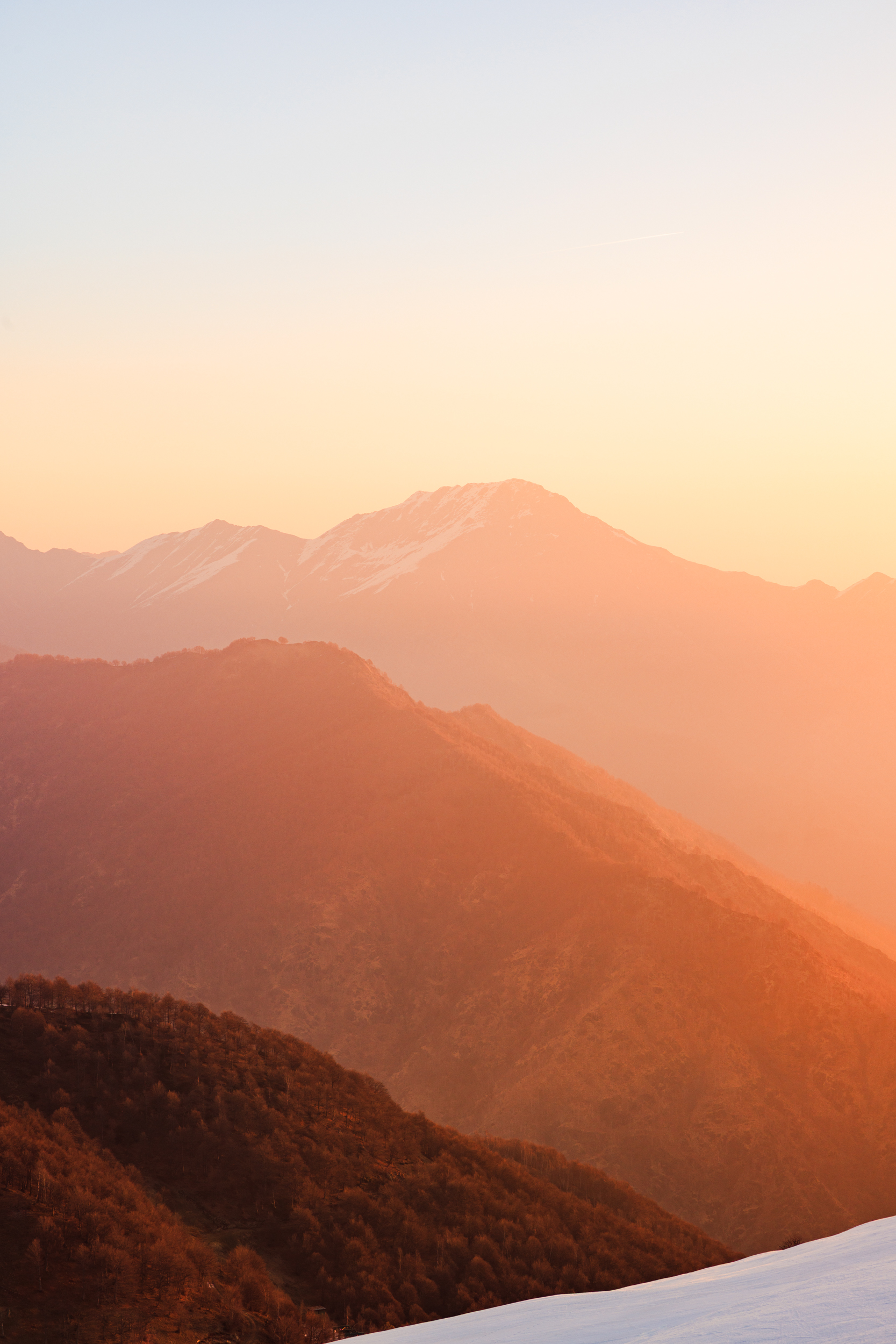
10. The Sessera Stream & Rifugio Piana del Ponte
The Sessera stream winds through Upper Valsessera, inviting a cool plunge in summer. Follow path F10 from Casa del Pescatore, and in just 35 minutes you’ll reach a trio of natural basins—clear, cold, and perfect for rinsing off the heat of the trail. Here, you’ll also find Rifugio Piana del Ponte—an authentic mountain hut at 1,100 meters, open from June to October and often alive with summer festivals.
